uranium enrichment
description: industrial process of increasing the proportion of uranium-235 in uranium (and lowering the proportion of uranium-238) through isotope separation
191 results

Bomb Scare
by
Joseph Cirincione
Published 24 Dec 2011
The plan sought to establish an International Atomic Development Authority that would own and control all “dangerous” elements of the nuclear fuel cycle, including all uranium mining, processing, conversion, and enrichment facilities. Only “non-dangerous” activities would be allowed on a national level, and even then only with a license granted by the proposed International Authority. Baruch reasoned that this structure would make verification relatively simple since the mere possession of a uranium conversion or enrichment plant by a national authority would be a clear violation. Baruch’s version of the plan also included automatic punishment for violations, which went a step further than the recommendations of Acheson and Lilienthal.2 Since the objective of the Baruch Plan was not only to restrain the spread of nuclear weapons, but also to prevent an arms race and eliminate the bomb altogether, it proposed that once the International Authority could ensure that no other state was able to construct the bomb, the United States would guarantee the elimination of its entire nuclear stockpile.
…
Prime Minister Zulfiqar Ali Bhutto famously remarked, “If India builds the bomb, we will eat grass or leaves, even go hungry, but we will get one of our own.”39 Pakistan had already started a secret program in 1972, aided by designs and technical information Abdul Qadeer Khan had brought back from his years working in the Netherlands at uranium enrichment facilities operated by the European consortium URENCO (Uranium Enrichment Company). Khan enabled Pakistan to begin production of centrifuges and then of highly enriched uranium. The secret smuggling operations he started to acquire machinery for this effort later formed the basis of his global nuclear black market that provided equipment to Iran, Libya, North Korea and perhaps other nations beginning in the 1980s.
…
-led invasion, IAEA Director General Mohamed ElBaradei told the UN Security Council, “During the past four years, at the majority of Iraqi sites, industrial capacity has deteriorated substantially.”79 In late 2003, David Kay, who was leading the postwar search for nuclear, biological, and chemical weapons, commented, “We have been struck in probably 300 interviews with Iraqi scientists, engineers and senior officials how often they refer to the impact of sanctions and the perceived impact of sanctions in terms of regime behavior.”80 Intense scrutiny from the IAEA and the leading nations of the UN Security Council is retarding Iran’s nuclear efforts today. Iran voluntarily agreed to the suspension of all uranium enrichment-related activities for over two years starting in November 2003, and by mid-2006 had still not built a centrifuge cascade large enough to enrich enough uranium for even one bomb, though it did produce a minuscule quality of low-enriched uranium with great fanfare in April 2006. Moreover, Iran has run into problems with uranium conversion, a necessary precursor to uranium enrichment. The gas is reportedly contaminated with heavy metals. Until Iran can reliably convert uranium yellowcake into the gaseous uranium hexafluoride that goes into centrifuges, they will not be able to enrich in any significant quantity.
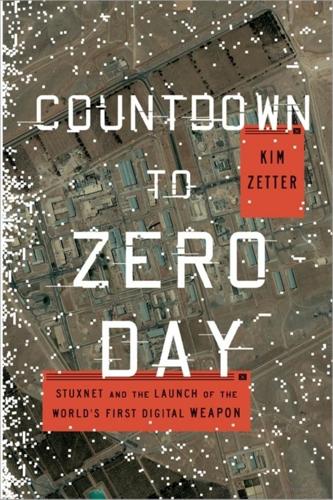
Countdown to Zero Day: Stuxnet and the Launch of the World's First Digital Weapon
by
Kim Zetter
Published 11 Nov 2014
This didn’t jibe with the particles the IAEA had collected, however, which ranged from 36 percent to 70 percent enriched.13 Uranium in its natural state contains less than 1 percent of U-235, the isotope needed for reactors and bombs. Most nuclear reactors need uranium enriched to just 3 to 5 percent. Highly enriched uranium is enriched to 20 percent or more. Although 20 percent enrichment can be used for crude nuclear devices, in addition to some types of nuclear reactors, weapons-grade uranium is enriched to 90 percent or above. Iranian officials insisted the highly enriched particles must have come from residue left inside used centrifuges that Iran had purchased—an admission that the centrifuge design wasn’t Iran’s own, as they had previously stated, and that some other nation was helping Iran build its program.
…
The agency’s mandate was to monitor what happened to uranium at the enrichment plant, not keep track of failed equipment. What the inspectors didn’t know was that the answer to their question was right beneath their noses, buried in the bits and memory of the computers in Natanz’s industrial control room. Months earlier, in June 2009, someone had quietly unleashed a destructive digital warhead on computers in Iran, where it had silently slithered its way into critical systems at Natanz, all with a single goal in mind—to sabotage Iran’s uranium enrichment program and prevent President Mahmoud Ahmadinejad from building a nuclear bomb.
…
As he took in the news from Jafarzadeh, he was struck by the level of detail it revealed. Heinonen had been waiting for information like this for a while. Like his counterparts at ISIS, he immediately suspected the Natanz facility wasn’t a fuel-manufacturing plant at all but a uranium enrichment plant. Two years earlier, government sources had told the IAEA that Iran tried to secretly purchase parts from Europe in the 1980s to manufacture centrifuges for uranium enrichment.10 Based on this, Heinonen had suspected that Iran had an illicit centrifuge plant hidden somewhere within its borders, but he never knew its location, and the IAEA couldn’t confront the Iranians without exposing the source of the intelligence.

The CIA Insider's Guide to the Iran Crisis
by
Gareth Porter
Published 21 Jan 2020
We judge with moderate confidence that the earliest possible date Iran would be technically capable of producing enough highly enriched uranium (HEU) for a weapon is late 2009, but that this is very unlikely. 230. For the purposes of this Estimate, by “nuclear weapons program” we mean Iran’s nuclear weapon design and weaponization work and covert uranium conversion-related and uranium enrichment-related work; we do not mean Iran’s declared civil work related to uranium conversion and enrichment. Document No. 2: United Nations Security Council Resolution 1803, March 3, 2008 [Extract] source: https://www.iaea.org/sites/default/files/unsc_resolution2231-2015.pdf (Under pressure from the U.S. government, the UN Security Council tried to put pressure on Iran to give up both its enrichment program and its ballistic missiles program.
…
When the IAEA first reported the details of Iran’s conversion and enrichment programs in the over the years, the news media published sensational stories on a variant of the theme of Iran’s “hiding a vast clandestine nuclear effort for 18 years,” as the Christian Science Monitor story put it.80 Those stories served to establish the official U.S. narrative of Iran as a would-be nuclear weapons state firmly in the public consciousness. Much of the press coverage conveyed the impression that Iran had been carrying out uranium enrichment for all those years. But in reality, Iran had not even tested a single centrifuge with uranium until 1999 and didn’t feed nuclear material into more than one machine until 2002. Contrary to the popular impression created by the media, it had taken Iran nearly 18 years merely to acquire the necessary technology to begin the process of enriching uranium.
…
So, any such reporting of those experiments would have led quickly to the revelation of China as the source of the uranium and would have unleashed strong U.S. diplomatic pressure on China to cease all nuclear cooperation with Iran.81 By erasing the real story of Iran’s decision to obtain its own capability for uranium enrichment, the falsified narrative encouraged the creation of fabrications aimed at reinforcing it. The most widely published such fabrication is a purported “intelligence report” from an unnamed intelligence service supposedly providing the gist of a meeting between President Ali Khamenei and top political and security officials in April 1984.
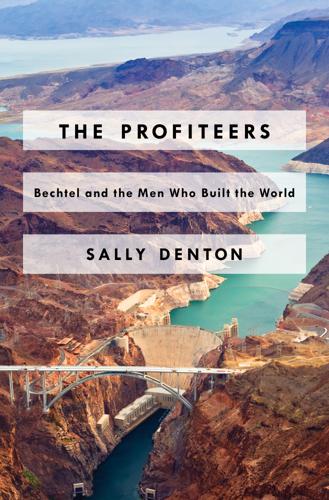
The Profiteers
by
Sally Denton
Bechtel would be at the forefront of the burgeoning new government-subsidized market, obtaining contracts to build more than half of the thirty-one nuclear plants on the drawing board. In November 1972, the federal government gave tentative approval for a $5.7 billion nuclear fuel plant at Dothan, Alabama—the world’s first privately owned nuclear facility of its kind—to a Bechtel subsidiary called Uranium Enrichment Associates (UEA) in partnership with the mega chemical company Union Carbide. The corporatization of uranium enrichment—which had been the government’s sole province since the Manhattan Project—ushered in what journalist Jonathan Kwitny described as the beginning of “what may be the largest commercial undertaking in history.” Despite fierce lobbying by Bechtel, Congress rejected the plan that would have broken the Atomic Energy Commission’s monopoly on the enrichment of uranium, and would have given UEA a series of subsidies and guarantees to meet the needs of commercial nuclear power plants—with the US government assuming most of the risk.
…
Steel, 87 US War Department, 51 University of California, and management Los Alamos, 251–52, 255, 265 University of California at Berkeley Graduate School of Journalism, Investigative Reporting Program, 307–08 University of California Radiation Laboratory, 251 University of Chicago, 125–26 Unruh, Vincent Paul, 220, 221, 226, 227 Uranium Enrichment Associates (UEA), 104 uranium enrichment facilities, 67–68, 104, 109, 113, 121, 152, 154, 156–57, 162, 258, 271, 272, 295 uranium mining projects, 23, 30, 87, 152, 156, 157 USA Today, 91, 236, 242 USSR. See Soviet Union Utah Construction Company, 23, 30 Utah Corporation, 23 Vallette, Jim, 169 van der Zee, John, 85 Venezuela, 50, 96 venture capital, 95, 135 Vietnam, 84, 209, 236 Vietnam War Bechtel and, 84, 236 Johnson’s policy on, 82 Kennedy’s policy on, 82 Nixon’s policy on, 95, 100 protests against, 84, 126, 267 Village Voice, 170 Viorst, Milton, 300 W.
…
McCone’s unwavering support of this radical strategy against the Soviet Union manifested especially in the atomic warfare theories he embedded in the inchoate air force. Truman had responded to McCone’s recommendations for an atomic buildup by tripling the capacity of the principal nuclear weapons plant at Oak Ridge, Tennessee, and constructing gaseous-diffusion facilities for uranium enrichment in Portsmouth, Ohio, and Paducah, Kentucky. Proud of his influence at the highest levels of government, McCone was even more gratified that his longtime friend Steve Bechtel would be the chief contractor on all three projects. While McCone’s sway within the Truman administration was impressive, it was minor in comparison with the authority he would wield with Eisenhower—his golfing buddy and the commander of the North Atlantic Treaty Organization (NATO)—who had solicited, and then followed, McCone’s advice about running for the White House on the Republican ticket in 1952.

The Achilles Trap: Saddam Hussein, the C.I.A., and the Origins of America's Invasion of Iraq
by
Steve Coll
Published 27 Feb 2024
His first move was to pull the new project to design and test a nuclear explosive device under his direct control. He next set his sights on the uranium enrichment effort. One night in July, he telephoned Mahdi Obeidi, a materials engineer with an undergraduate degree from the Colorado School of Mines and a doctorate from the University College of Swansea. Obeidi had worked on the French research reactor project and then transferred to the clandestine uranium enrichment program. Hussein Kamel identified him as a qualified scientist and experienced administrator. Around midnight, they met in a hospital parking lot in Baghdad’s fancy Mansour neighborhood.
…
He not only showed “great interest,” as Jafar recalled, but also gave the impression “that he [was] aware of all that was presented to him.”[4] That morning, Khaliq made a fateful forecast. He told Saddam that the nuclear program would reach its “fruitful objectives” in five years, or in 1990, according to an atomic energy commissioner who was present. Jafar thought Khaliq was talking about achieving only production-scale uranium enrichment—a finished bomb would require additional work. In any event, when Saddam heard the forecast, his eyes welled with emotion. “If you produce the nuclear bomb,” the president told Jafar, “I will make a golden statue of you.” After the meeting, the commissioner recalled, the president rewarded his nuclear team with another round of Mercedes-Benz cars, and in a more novel gesture, he handed out recreational vehicles, too.[5] * * * — Jafar had by now grown accustomed to Iraq’s idiosyncratic leader.
…
Jafar was widely respected, but some of his colleagues felt that he could be haughty and controlling, and that he was too enamored of basic science. This critique held that he was not moving fast enough to build a nuclear-weapons device—an actual bomb that could reliably explode. Indeed, although Jafar had made notable progress on uranium enrichment, he had yet to start work on “weaponization,” meaning the design and testing of a bomb shell and a conventional explosives package that would cause uranium fuel to detonate. In fact, Jafar was reluctant to get personally involved with weaponization, although it would eventually come under his supervision.

Atomic Accidents: A History of Nuclear Meltdowns and Disasters: From the Ozark Mountains to Fukushima
by
James Mahaffey
Published 15 Feb 2015
A cylindrical shell made of a stack of uranium rings was blown against a similar stack of smaller rings held stationary in a block of tungsten carbide, using a smooth-bore 6.5-inch gun barrel. The projectile rings, propelled quickly by three bags of burning nitrocellulose, and the smaller cylinder assembled into a larger, complete cylinder of uranium metal, enriched to 86% U-235. The resulting configuration was hypercritical, and it fissioned explosively. To maximize the “shock and awe,” no leaflets were dropped warning Japan of an impending A-bomb attack, and security was so tight on Tinian Island, the base for atomic operations, that most of the Army Air Force personnel could only guess what was going on.27 However, the surprise was not as complete as one might think.
…
Everyone was impressed, particularly Oppenheimer, who was not disappointed by Feynman’s sharp analysis of the problem. It was even worse than Segré had reported. There were storage drums of different sizes stored in dozens of rooms in many buildings on site. Some held 300 gallons, some 600 gallons, and some an eye-opening 3,000 gallons of uranium oxide dissolved in water, in a range of uranium-235 enrichments from raw, natural uranium to nearly critical concentrations. Some were on brick floors, which was fine, but some were on wooden floors. Wood is an organic compound, and it contains hydrogen, which would moderate the speed of leaking neutrons and reflect them back into a drum, enhancing the conditions for fission.
…
Walther Bothe drew nuclear constants measurement, and Georg Stetter was given transuranic elements. Heisenberg was assigned the core problem, to prove the validity of the chain-reaction concept and then use the resulting nuclear reactor as a neutron source for further experimentation and data collection. Oddly, a separate uranium-enrichment task was spun off for Manfred von Ardenne, a German television pioneer, funded by the German Post Office. Truth be known, Heisenberg was a brilliant theorist but not so good as an experimentalist, and his task involved building a nuclear reactor, which was heavy on the experimental side.
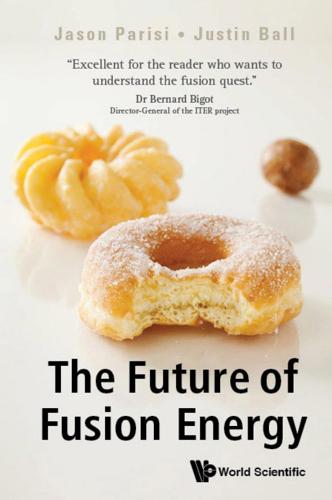
The Future of Fusion Energy
by
Jason Parisi
and
Justin Ball
Published 18 Dec 2018
The minimum mass of a sphere that still can sustain a chain reaction is termed the critical mass of the isotope. There is one crucial problem with all three of our fuels: they are all very difficult to obtain. Uranium-235 is common in nature, but only appears distributed amongst a much larger amount of uranium-238. To make natural uranium usable, we must enrich it to artificially increase the fraction of uranium-235. Plutonium-239 and uranium-233, on the other hand, don’t exist in nature. Instead, they must be bred from uranium-238 and thorium-232, respectively. Both of these options, enrichment and breeding, carry their own set of challenges that we will explore in the next two sections. 10.2.1Uranium enrichment How do we enrich uranium to increase the fraction of U-235?
…
However, since the difference is so slight, this process must be repeated thousands of times to achieve a substantial degree of enrichment. Still, arduous as it is, this was the predominant method employed for enriching the uranium used in the Manhattan Project. Figure 10.7:The process used to convert raw uranium ore into a material suitable for enrichment. Currently, the overwhelming majority of the world’s uranium is enriched using gas centrifuges. A centrifuge is a large, sealed cylinder that rotates about its center at a high rate.17 When hex is injected in, the heavier molecules (i.e. those with a U-238 atom) are pushed outwards more strongly than the lighter molecules (i.e. those with a U-235 atom). The reason for this is the same as why spinning carnival rides require children to sit closer to the center than their parents.
…
The gas that remains near the center (which has a slightly higher fraction of U-235) is then extracted and piped to the next centrifuge. As with gaseous diffusion, this process must be repeated many times to significantly increase the concentration of U-235. Figure 10.8:A centrifuge used for uranium enrichment. When the hex is inserted into the spinning chamber, the heavier gas molecules (i.e. those that contain a U-238 atom) preferentially move to the outside. This causes the concentration of U-235 in the hex near the center to be slightly larger, which can then be extracted and fed into another centrifuge for further enrichment.
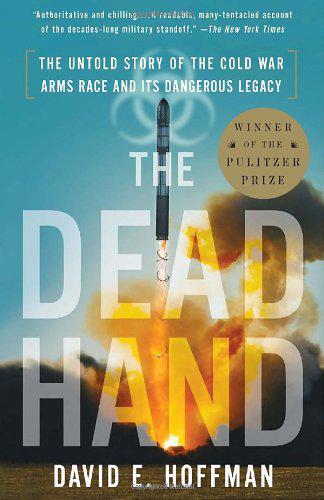
The Dead Hand: The Untold Story of the Cold War Arms Race and Its Dangerous Legacy
by
David Hoffman
Published 1 Jan 2009
Mette's workers were making fuel for Russian nuclear power plants. If they weren't exactly thriving, Weber saw they were not starving either. The entire town seemed to be a "little Russia"--Weber saw no Kazakhs there. Just before leaving, Weber inquired gently about the uranium. "If it is not a secret," he asked, "do you have any highly-enriched uranium?" Highly-enriched uranium could be used for nuclear weapons. Mette was still evasive. The former Soviet Union was brimming with highly-enriched uranium and plutonium. Viktor Mikhailov, the Russian atomic energy minister, revealed in the summer of 1993 that Russia had accumulated much more highly-enriched uranium, up to twelve hundred metric tons, than was previously thought.8 Outside of Russia, in the other former republics, less was known about stockpiles, but much was feared about the Iranians and the Iraqis hunting for material to build nuclear bombs.
…
They couldn't be sure if they could take samples, or photographs, so it had to be someone who could mentally absorb everything, who would know about canisters and metals. The job went to Elwood Gift of the National Security Programs Office at the Oak Ridge National Laboratory in Tennessee. A chemical-nuclear engineer, Gift had experience in most of the nuclear fuel cycle, including uranium enrichment. Gift arrived in Kazakhstan March 1 amid swirling snowstorms, and for several days holed up at Weber's house. When the weather cleared, they boarded an An-12 turboprop for Ust-Kamenogorsk. The Kazakh government purchased tickets in false names to hide their identity. Fuel was scarce. Just ten minutes after takeoff, they unexpectedly landed again--the tanks were almost empty and the pilot attempted to coax more fuel from a military airfield.
…
When they walked away from the uranium warehouse, Gift, carrying the briefcase, suddenly slipped and fell hard on the ice. Weber and Mette helped him to his feet but looked at each other. "Both of us, our initial reaction was, Oh my God, the samples!" Weber said. Both Gift and the samples were fine. Back in Almaty, they told the ambassador they had verified the uranium was highly enriched. Courtney immediately sent a cable to Washington, noting the ancient padlock on the door. The cable, Weber recalled, "hit Washington like a ton of bricks." Starr, who was in Washington, said the cable "established there was a potentially serious proliferation issue." Weber thought there was only one thing to do.

Twilight of Abundance: Why the 21st Century Will Be Nasty, Brutish, and Short
by
David Archibald
Published 24 Mar 2014
By 2003, Iran had created an isotope of polonium (Po210) by irradiating bismuth in its Tehran reactor. One of the best-known uses for this isotope is as a neutron initiator in nuclear weapons. It has been estimated that as of November 2012, Iran had 7.6 metric tons of uranium enriched to 3.5 percent U235 and 232 kilograms of uranium enriched to 20 percent U235. Further enriched, the latter quantity is estimated to provide enough uranium for one bomb with a fifty-kilogram core of 90 percent U235. GUARANTEED SECOND STRIKE The U.S.-Russian nuclear standoff gave mankind the most peaceful period in world history.
…
One result of Communism’s collapse was that the former Communists and their fellow travelers in the West found a new ideological home in the environmental movement and moved on to promoting the global warming hoax as a wealth redistribution exercise, via a network of UN agencies. Another unfortunate consequence was that a number of regimes felt much less constrained from developing nuclear weapons. The errant nuclear power of the moment is Iran, which has a large, well-funded uranium-enrichment program and a stated intention of annihilating Israel with nuclear weapons. But whatever the fate of the Iranian bomb-making effort, there is already another nation that is also heading toward failed-state status while still upping the bomb-making rate of its nuclear weapons program. This is Pakistan, “the land of the pure.”
…
A Pakistani-initiated attack on India’s coastal city of Mumbai by terrorists backed by Pakistan’s secret service agency, the ISI, would follow in 2008. The terrorists were members of the Lashkar-e-Taiba, the same group that had earlier attacked India’s parliament. And in 2011, satellite imagery showed that construction had commenced on a fourth plutonium-producing reactor at Khushab. Pakistan’s uranium-enrichment facilities are thought to be capable of producing 110 kilograms of weapons-grade U235 annually, which is enough for five weapons. On the completion of the fourth Khushab reactor, assuming that these four reactors are each rated at seventy megawatts thermal and operate 70 percent of the time, Pakistan could also produce seventy kilograms of weapons-grade plutonium each year, enough for fourteen weapons.
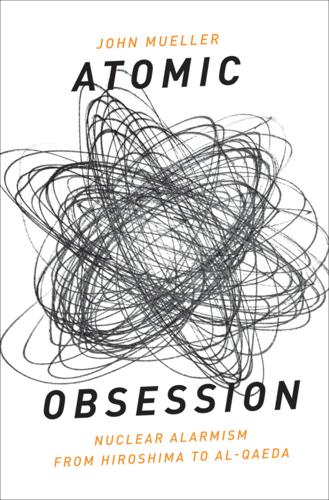
Atomic Obsession: Nuclear Alarmism From Hiroshima to Al-Qaeda
by
John Mueller
Published 1 Nov 2009
According to CIA Director George Tenet, “Mahmood was thought of as something of a madman by many of his former colleagues in the Pakistan nuclear establishment.”17 It is possible to believe that the two scientists “provided detailed responses to bin Laden’s technical questions about the manufacture of nuclear, biological and chemical weapons,” as another Washington Post report puts it.18 But the questions do not seem to be very sophisticated, and as the scientists themselves have reportedly insisted, it seems that the discussion was wide-ranging and academic (even rather basic) and that they provided no material or specific plans. Moreover, as the Pakistani officials stressed to Khan and Moore, Mahmood had been involved with uranium enrichment and plutonium production but not bomb building. Therefore he “had neither the knowledge nor the experience to assist in the construction of any type of nuclear weapon,” nor, it seems, were the scientists experts in chemical or biological weapons. Therefore, they likely were incapable of providing truly helpful information, because their expertise was not in bomb design, which might be useful to terrorists, but rather in the processing of fissile material, which is almost certainly beyond the capacities of a nonstate group, as discussed in chapter 12.
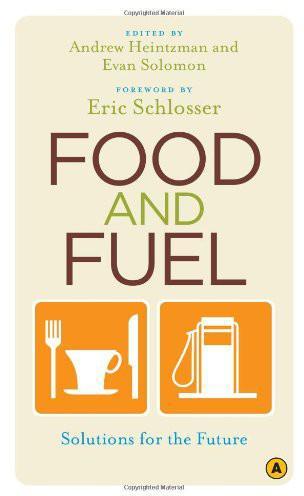
Food and Fuel: Solutions for the Future
by
Andrew Heintzman
,
Evan Solomon
and
Eric Schlosser
Published 2 Feb 2009
Greenhouse gases are emitted during the extraction of uranium for fuel, as well as during uranium processing and enrichment. Greenhouse gases are also emitted in the production of construction materials for nuclear power plants, such as concrete and steel. In addition, there are some minor emissions of greenhouse gases during reactor operations by secondary generators that are required in case of accidents. These generators must be tested on a regular basis, and during the testing they emit carbon dioxide and other gases. Most nuclear power reactors in operation in the world today — those termed light water reactors — require uranium to be enriched in one of its naturally occurring isotopes, uranium-235, for use in fuel.
…
Perhaps the main problem with nuclear power is that some of the associated technologies — reprocessing of spent fuel to separate plutonium and uranium enrichment technologies — pose the highest proliferation threats. Separated plutonium can easily be fashioned into nuclear weapons by knowledgeable people. Highly enriched uranium is arguably even easier to make into nuclear weapons. Thus, for years the world has safeguarded these technologies in non–nuclear weapons states. The problem with a ten-fold expansion in nuclear power is the resulting growth and spread of these technologies. Clearly, they would have to be controlled. Perhaps the best way to do so would be through the use of international uranium enrichment, reprocessing, and reactor production facilities.
…
Thus, its annual operation creates the emission of about as much greenhouse gases as that from three 1,100-megawatt coal plants. Other enrichment technologies, such as centrifuge plants, are less energy intensive than gaseous diffusion; nonetheless, they still use electricity. Unless a system can be made in which all the electricity used in uranium mining, milling, and enrichment comes form nuclear power itself, nuclear-produced electricity will result in the emission of some greenhouse gases. The larger question that we are trying to address is, what is a reasonable expectation for greenhouse-gas-emission reductions from nuclear power? Today’s nuclear power plants save 600 million tonnes of carbon per year from going into the atmosphere from equivalent power-producing coal-fired plants.
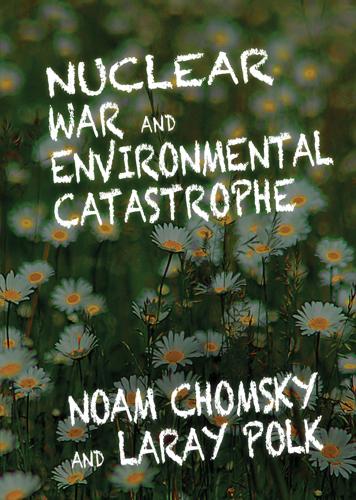
Nuclear War and Environmental Catastrophe
by
Noam Chomsky
and
Laray Polk
Published 29 Apr 2013

Chokepoints: American Power in the Age of Economic Warfare
by
Edward Fishman
Published 25 Feb 2025
GO TO NOTE REFERENCE IN TEXT Ahmadinejad was a strict adherent: Scott Peterson, “Waiting for the Rapture in Iran,” The Christian Science Monitor, December 21, 2005, www.csmonitor.com/2005/1221/p01s04-wome.html. GO TO NOTE REFERENCE IN TEXT restarted uranium enrichment: “Iran Agrees to Nuclear Demands,” Carnegie Endowment for International Peace, October 21, 2003, carnegieendowment.org/2003/10/21/iran-agrees-to-nuclear-demands-pub-14521; Rosalind Ryan, “Iran Resumes Uranium Enrichment,” The Guardian, August 8, 2005, www.theguardian.com/environment/2005/aug/08/energy.iran. GO TO NOTE REFERENCE IN TEXT “hasten the emergence of your last repository”: Mahmood Ahmadinejad, “Address by H.
…
The countries of most concern were the three that Bush identified in his 2002 State of the Union address as the “axis of evil”: Iraq, Iran, and North Korea. By the time Levey arrived at TFI, the U.S. military occupied Iraq. Iran remained worrisome, yet tensions had eased for the moment; the country’s reformist president, Mohammad Khatami, had recently struck a deal with Britain, France, and Germany to suspend Iran’s uranium enrichment program and allow more intrusive inspections of its nuclear facilities. Tensions with North Korea, on the other hand, were ratcheting up. 7 An Economic Weapons Test In early 2005, tensions between the United States and North Korea were boiling. Pyongyang had long experimented with nuclear technology, but that February, it formally declared that it had “manufactured nukes.”
…
Ahmadinejad was a strict adherent to a fundamentalist Shiite creed that anticipated the imminent return of the Hidden Imam, a messianic figure expected to face off against forces of evil in an apocalyptic war and ultimately usher in peace on earth. He also rattled Western audiences by frequently denying the Holocaust and threatening to destroy Israel. Shortly after Ahmadinejad’s inauguration, Tehran shrugged off a diplomatic overture from Europe and restarted uranium enrichment, which was temporarily suspended under Ahmadinejad’s reformist predecessor. Iran looked poised to speed up its nuclear development. Then, in his first appearance on the world stage, Ahmadinejad unnerved the UN General Assembly in New York by concluding his speech with a prayer for the return of the Hidden Imam.
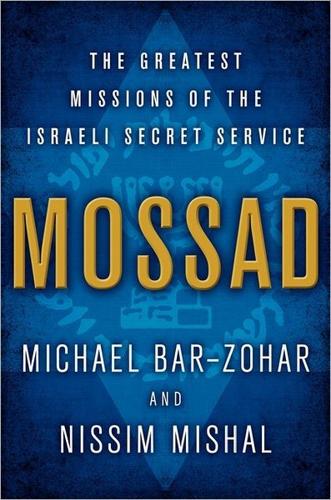
Mossad: The Greatest Missions of the Israeli Secret Service
by
Michael Bar-Zohar
and
Nissim Mishal
Published 1 Jan 2010
They also insisted that the forty-four-year-old professor was only a renowned electro-magnetic expert and not involved with Iran’s nuclear endeavors in any way. But it turned out that Hosseinpour worked at an Isfahan secret installation where raw uranium was converted into gas. This gas was then used for uranium enrichment by a series (“cascades”) of centrifuges in Natanz, a faraway, fortified underground installation. In 2006, Hosseinpour was awarded the highest Iranian prize for science and technology; two years earlier, he had been awarded his country’s highest distinction for military research. The assassinations of Iranian nuclear scientists were just one front in a much larger war.
…
If the experiments succeeded, Joklik would try getting more cobalt, which would be placed in the missiles’ warheads and spread deadly radiation on impact. The goal of the second project, Cleopatra, was to produce two atomic bombs. Joklik suggested an ingenious method for manufacturing the bombs: buying uranium enriched to 20 percent in the United States or in Europe; enriching it up to 90 percent by special centrifuges developed in Germany and Holland by the scientists Dr. Wilhelm Groth, Dr. Jacob Kistemaker, and Dr. Gernot Zippe; and building the bomb with the enriched uranium. Joklik flew to the United States and tried to get the enriched uranium there; he also met with several German scientists and invited them to build centrifuges in Egypt.
…
In Jerusalem and Washington, official sources confirmed that Israel and the United States were acting together, but disagreed on a major point: when would Iran have to be stopped by all means necessary—military or other. The American services claimed that this would be the moment when the enrichment of uranium by Iran reached 80 percent, a crucial stage in the development of their nuclear capability. Uranium enriched to that level could be very quickly upgraded to 97 percent, the degree needed for the assembly of an atomic bomb. Israel’s timetable was different, based on reports from the ground and satellite detection. The Mossad had discovered that Iran was engaged in a chaotic race against time, building a large number of underground facilities buried at a depth of hundreds of meters.
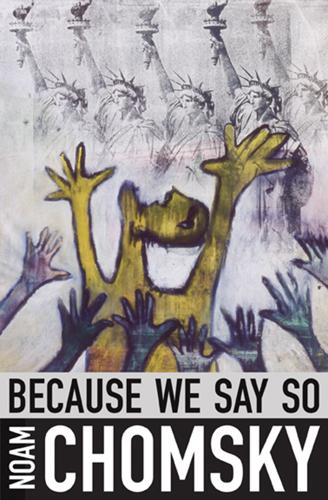
Because We Say So
by
Noam Chomsky
Ten years ago Iran offered to resolve its differences with the United States over nuclear programs, along with all other issues. The Bush administration rejected the offer angrily and reprimanded the Swiss diplomat who conveyed it. The European Union and Iran then sought an arrangement under which Iran would suspend uranium enrichment while the EU would provide assurances that the U.S. would not attack. As Selig Harrison reported in the FINANCIAL TIMES, “the EU, held back by the U.S. . . . refused to discuss security issues,” and the effort died. In 2010, Iran accepted a proposal by Turkey and Brazil to ship its enriched uranium to Turkey for storage.
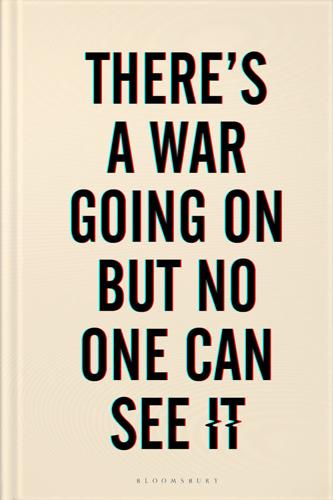
There's a War Going on but No One Can See It
by
Huib Modderkolk
Published 1 Sep 2021
The first was a mysterious attack on a nuclear facility in Iran. Over a period from 2007 to 2009, an advanced computer bug modified the controls of Iranian ultracentrifuges in a plant near the city of Natanz, some 200 miles south of Tehran. First, it caused pressure inside the centrifuges used for uranium enrichment to spike for no apparent reason. Plant technicians who saw it happen were baffled. Why hadn’t their systems signalled a failure? Next, the bug caused hundreds of centrifuges to speed up. One by one, they spun themselves to pieces before the technicians’ horrified eyes. Several Iranian scientists were sacked and it is estimated that Iran’s nuclear weapons programme has been set back years.
…
Back in the 1970s, Pakistani atomic expert Abdul Qadeer Khan came to Holland to study nuclear physics. He worked at a research laboratory in Amsterdam for years, building a life in the Netherlands with his South African wife, making Dutch friends and learning the language. From time to time he also visited the eastern city of Almelo, where a uranium-enrichment facility operated by the British−German−Dutch consortium UCN used a process known as ultracentrifugation. Ultracentrifugation was a unique technology. No other country knew how to do it. Exporting the technology was therefore prohibited and surrounded by tight restrictions, but there were equally persistent attempts to dodge them.
…
Evidently, the man who’d embraced life in the Netherlands had turned against the West, and agencies in the Netherlands were mystified as to how it could have happened. Thanks to Dutch ultracentrifugation expertise, by this time the AIVD and MIVD had decades-long experience with the process and materials used in uranium enrichment. According to my sources, the AIVD kept close tabs on the market, especially freight carriers that sometimes shipped falsely declared goods to countries like Pakistan and Iran. The agency had several partners in this effort, notably the American CIA, German BND, British MI5 and Israeli Mossad.
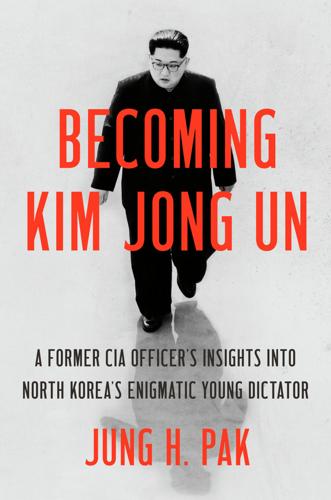
Becoming Kim Jong Un: A Former CIA Officer's Insights Into North Korea's Enigmatic Young Dictator
by
Jung H. Pak
Published 14 Apr 2020
The Agreed Framework slowed down North Korea’s nuclear program, but it did not eliminate it. The agreement’s death throes and the second nuclear crisis began when Assistant Secretary of State James Kelly confronted North Korean leaders about their covert uranium enrichment program during his visit there in October 2002. Things went from bad to worse, and the threat of a U.S. attack against North Korea grew, following revelations of both its uranium enrichment program and its ability to produce fissile materials for nuclear weapons. That was when North Korea doubled down and became the first country to leave the NPT, in 2003. A few weeks later, North Korean fighter jets intercepted a U.S.
…
The South Korean air force scrambled their F-16 fighter jets and fired artillery; the prospect of a military conflict on the Korean Peninsula seemed inevitable. The United Nations and alarmed leaders from Washington and Beijing cautioned restraint on both sides. Yet at nearly the same time as the island-shelling incident, North Korea revealed a large uranium enrichment plant to visiting U.S. former officials and academics, who were amazed by the modern, advanced facility, which triggered suspicion about the regime’s intention to make highly enriched uranium bomb fuel. As an insurance policy against regime-ending retaliatory acts by the United States or South Korea, and to be better positioned to extract political and economic concessions, Kim Jong Il engaged in a flurry of diplomatic activity with North Korea’s biggest patron, Beijing.
…
At the CIA, where I was a lead political analyst at the time, that meant providing the analysis for a seemingly never-ending series of National Security Council policy meetings, producing President’s Daily Briefs—our signature product designed to support the president, the cabinet, and other senior officials—and spending lots of late nights at the office. On leap day in 2012, after two years of bilateral negotiations, North Korea agreed to a deal with the United States that called for a suspension of uranium enrichment, international inspections, and a moratorium on nuclear and missile tests in exchange for 240,000 tons of food aid. A mere two weeks later, the new Kim regime announced its intention to conduct a space launch banned by U.N. sanctions. North Korea had long insisted on its right to peaceful use of outer space and claimed that it wanted to send satellites into orbit to better predict the weather and harvest yields, but international voices argued that this was simply a cover and that the regime intended to test ballistic missile technology.

Boom: Bubbles and the End of Stagnation
by
Byrne Hobart
and
Tobias Huber
Published 29 Oct 2024
Bubbles are not only mechanisms for coordinating parallel innovation in emerging technologies. Scientific megaprojects also often follow a bubble-like dynamic, as we will explore in Chapters 3 and 4. One of the most impressive aspects of the Manhattan Project was its reliance on the assumption that other parts of the project would finish successfully. Take the uranium enrichment plant at Oak Ridge, which required an enormous amount of electricity to run and was designed to use an uncertain enrichment technique at scale. It was possible that the plant would not be able to produce uranium in sufficient quantity and purity to be useful in the atomic bomb. (Only a few years earlier, estimates of the amount of uranium an atomic bomb would require varied by an order of magnitude.)
…
Yet conventional electroplating would have required more nickel than was available, so the project had to find an electroplating expert who developed novel techniques to fully coat surfaces in nickel using 99.9 percent less material than conventional methods required. 168 The output of K-25 was passed to yet another facility, Y-12, located at the same site. Here, uranium was further enriched to 85 percent U-235, making it suitable for weapons. Y-12 used powerful magnetic fields to separate the two isotopes. The Y-12 facility also ran into materials shortages due to the war. The electromagnetic separation devices, known as calutrons, required immense quantities of copper, which was in short supply.
…
By January 1945, this complex supply chain produced almost half a pound of enriched uranium each day, enough to make a few bombs in a year, with further efficiency improvements to come. The total investment by the end of the war was as large as the entire US auto industry. 169 The Manhattan Project’s approach to uranium enrichment showcases the massive parallelization induced by bubbles. It wasn’t clear at first which process would produce sufficient enriched fissile material. Instead of ranking options and implementing them in order, the Manhattan Project pursued several at once and ended up using three of them together.

Global Catastrophic Risks
by
Nick Bostrom
and
Milan M. Cirkovic
Published 2 Jul 2008
As its name implies, it fires a projectile - in this case a piece of H E U - down a gun barrel into another piece of H E U . Each piece of H E U is sub-critical and by itself cannot sustain an explosive chain reaction. Once combined, however, they form a supercritical mass and can create a nuclear explosion. Weapons-grade H E U - uranium enriched to over 90% of the isotope U235 - is the most effective material for a H EU-based device. However, even H E U enriched to less than weapons-grade can lead to an explosive chain reaction. The Hiroshima bomb, for example, used about 60 kg of80% enriched uranium. Terrorists would probably need at least 40 kg of weapons-grade or near weapons-grade H E U to have reasonable confidence that the I N D would work (McPhee, 1 974, pp. 1 89-1 94) . 2 1 As indicated above, the potential for non-state actors to build a nuclear explosive already had been expressed publicly by knowledgeable experts as early as the 1 970s.
…
Aside from the assistance provided by a state sponsor, the most likely means by which a non-state actor is apt to experience a surge in its ability to acquire nuclear explosives is through technological breakthroughs. Today, the two bottlenecks that most constrain non-state entities from fabricating a nuclear weapon are the difficulty of enriching uranium and the technical challenge of correctly designing and building an implosion device. Although almost all experts believe uranium enrichment is beyond the capability of any non-state entity acting on its own today, it is possible that new enrichment technologies, especially involving lasers, may reduce this barrier. Unlike prevailing centrifuge and diffusion enrichment technology, which require massive investments in space, infrastructure, and energy, laser enrichment could theoretically involve smaller facilities, less energy consumption, and a much more rapid enrichment process.
…
This is a distinguishing feature of biological weapons that is obscured by the tendency to include them with nuclear, chemical, and radiological weapons as a 'weapon of mass destruction' (Chyba, 2002) . 20.3 Biological weapons are d istinct from other so-called weapons of mass destruction Producing a nuclear bomb is difficult; it requires expensive and technologically advanced infrastructure and involves uranium enrichment or plutonium production and reprocessing capacity that are difficult to hide. These features render traditional non-proliferation approaches feasible; despite being faced with many obstacles to non-proliferation, the I nternational Atomic Energy Agency (IAEA) is able to conduct monitoring and verification inspections on a large number (over a thousand) of nuclear facilities throughout the world.
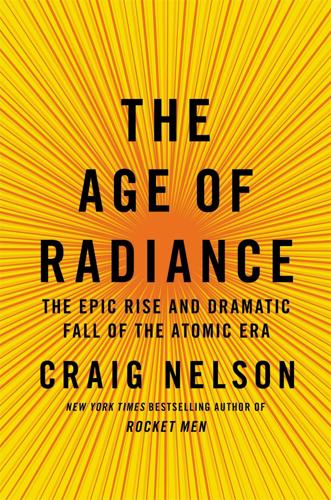
The Age of Radiance: The Epic Rise and Dramatic Fall of the Atomic Era
by
Craig Nelson
Published 25 Mar 2014
Abbasi and his wife escaped more or less unharmed, but one of his colleagues was killed by a similar attack, as was an Iranian particle physicist in January 2010, an electronics specialist in July 2011, and a manager at the Natanz uranium enrichment plant in January 2012. Teheran blamed Tel Aviv and Washington for the assassinations, as well as for the malware viruses known as Flame and Stuxnet, which were discovered in the spring of 2012 infecting Iran’s uranium enrichment computers. Flame is lithe spyware that turns on computer microphones and Skypes the recorded conversations; scans the neighborhood’s Bluetooth gadgets for names and phone numbers; and takes pictures of the computer’s screen every fifteen to sixty seconds. Stuxnet infected Iran’s uranium-enriching centrifuges and sped them up until they committed suicide.
…
But after FDR’s death, the United States instead forbade the sharing of secret atomic-energy information with any foreign country, including Britain and Canada, on pain of death. It didn’t actually matter for the allies as they had been involved enough to know the fundamentals, but since the USA had a monopoly on uranium enrichment, the British were forced to engineer reactors that used natural uranium metals, moderated by graphite but cooled by gas. France followed Britain’s design in their own burners, and Canada used similar fuels, but moderated with heavy water. In the end, America’s attempts at safeguarding her atomic secrets hurt only her own allies.
…
But a number of physicists and engineers insist that the thorium design will solve all of those problems, with less maintenance, and less waste. Microsoft billionaires Bill Gates and Nathan Myhrvold are, meanwhile, investing in a “traveling wave reactor” process, a type of breeder reactor fueled by ordinary uranium instead of enriched, which, if it works, won’t require massive Oak Ridge–like industrial plants isolating near-weapons-grade isotopes. Breeder reactors are so interesting that Eagle Scout David Hahn decided that, for his 1994 Atomic Energy merit badge, he should build one in his parents’ suburban Detroit potting shed.
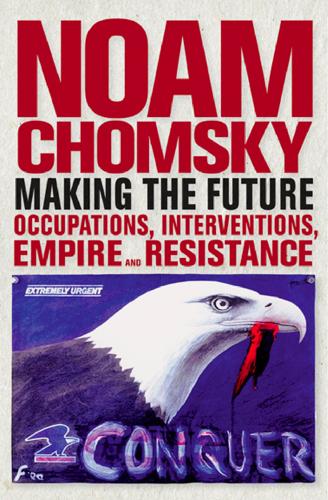
Making the Future: The Unipolar Imperial Moment
by
Noam Chomsky
Published 15 Mar 2010
The Bush administration was widely praised for having shifted to a more conciliatory stand—namely, by allowing a U.S. diplomat to attend without participating—while Iran was castigated for failing to negotiate seriously. And the powers warned Iran that it would soon face more severe sanctions unless it terminated its uranium-enrichment programs. Meanwhile India was applauded for agreeing to a nuclear pact with the United States that would effectively authorize its development of nuclear weapons outside the bounds of the Nonproliferation Treaty (NPT), with U.S. assistance in nuclear programs along with other rewards—in particular, to U.S. firms eager to enter the Indian market for nuclear and weapons development, and ample payoffs to parliamentarians who signed on, a tribute to India’s flourishing democracy.
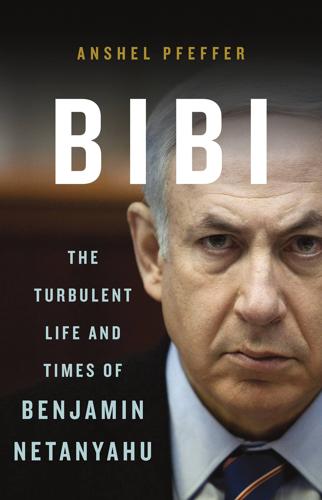
Bibi: The Turbulent Life and Times of Benjamin Netanyahu
by
Anshel Pfeffer
Published 30 Apr 2018
The prime suspect, Israel, never took responsibility. The United States was a partner in the secret campaign against Iran. Bush had authorized the cooperation, which continued, and even intensified, under Obama. Their most famous success was Stuxnet, a malicious computer worm that found its way into the operating system of Iran’s uranium enrichment centrifuges. According to the New York Times, Stuxnet had been developed by a joint American-Israeli team in “Operation Olympic Games” to sabotage Iran’s nuclear program.8 Contrary to the “throwing Israel under the bus” narrative pushed by Netanyahu’s people in Jerusalem and Washington, Obama authorized taking the intelligence-sharing and operational coordination between the two countries to unprecedented levels.
…
Obama refused to publicly go beyond his standard formulation—“All options are on the table,” and the United States would “do what is necessary.” The United States was indeed working on operational plans to strike Iran if necessary. For one, it was developing massive bunker-buster bombs capable of taking out the underground uranium enrichment plants. But what Israelis and Iranians heard was a president who had no intention of going to war and who would do whatever it took to prevent Israel from doing so. Bibi with Benzion at age 101. ON APRIL 30, 2012, Benzion Netanyahu passed away at the age of 102. Well into his late nineties, he had soldiered on with his research, spending long periods in the United States, where he often read and wrote in the New York Public Library.
…
“Iran uses diplomatic negotiations as a means to buy time to advance its nuclear program,” Netanyahu said. And “sanctions have not stopped Iran’s nuclear program either.”24 He had even brought a diagram, in the shape of a cartoon bomb, on which he drew with a marker a thick red line, highlighting the 90 percent uranium enrichment threshold. From the red line, “it’s only a few months, possibly a few weeks, before they get enough enriched uranium for the first bomb…. The relevant question is not when Iran will get the bomb. The relevant question is at what stage can we no longer stop Iran from getting the bomb. The red line must be drawn on Iran’s nuclear enrichment program because these enrichment facilities are the only nuclear installations that we can definitely see and credibly target.”25 Netanyahu was imploring Obama and the world to stop Iran from crossing the red line.

Spies, Lies, and Algorithms: The History and Future of American Intelligence
by
Amy B. Zegart
Published 6 Nov 2021
Using images released by the Iranian government, commercial satellite imagery, and Google Earth, they geo-located the scorched building. On the basis of their nuclear and country expertise, each reached the same conclusion: the Iranians were lying. The shed was actually a nuclear centrifuge assembly building at Natanz, Iran’s main uranium enrichment facility.4 And the fire might have been an act of sabotage.5 Natanz was well known to United Nations weapons inspectors and American intelligence officials. Located about 125 miles south of Tehran, its vast underground facilities housed thousands of nuclear centrifuges, the advanced machines used to enrich uranium for both nuclear energy and nuclear weapons.6 For years, the International Atomic Energy Agency (IAEA) had been locked in cat-and-mouse inspections there7 to collect evidence about violations of the Nuclear Non-Proliferation Treaty8 and to monitor Iran’s compliance with the 2015 nuclear deal, which allowed only limited uranium enrichment for peaceful purposes.9 Natanz was also the site of the most sophisticated cyberattack ever conducted.
…
Located about 125 miles south of Tehran, its vast underground facilities housed thousands of nuclear centrifuges, the advanced machines used to enrich uranium for both nuclear energy and nuclear weapons.6 For years, the International Atomic Energy Agency (IAEA) had been locked in cat-and-mouse inspections there7 to collect evidence about violations of the Nuclear Non-Proliferation Treaty8 and to monitor Iran’s compliance with the 2015 nuclear deal, which allowed only limited uranium enrichment for peaceful purposes.9 Natanz was also the site of the most sophisticated cyberattack ever conducted. Code-named “Olympic Games,” the joint U.S.-Israeli cyber operation destroyed approximately one thousand10 nuclear centrifuges by secretly injecting malware into their operating computers.11 Experts believed “Olympic Games” slowed Iran’s march to the bomb by a year or more.12 But Albright and Hinz weren’t employees of the IAEA or the U.S.
…
Already, thousands of citizen scientists have successfully sifted through massive quantities of data to help a Cal Tech and UC Santa Cruz team identify several new exoplanets56 and an international team of physicists identify new gravitational lenses.57 In 2016, Melissa Hanham at the Center for Nonproliferation Studies began a nuclear threat crowdsourcing initiative called Geo4Nonpro, which drew several hundred imagery experts together. They discovered the geolocation of North Korea’s clandestine Kangson uranium enrichment facility.58 The New Nuclear Sleuths: Who’s Who and What’s Different All of these developments have given rise to a cottage industry of non-governmental nuclear intelligence collectors and analysts. Academic teams, like my colleagues at Stanford’s Center for International Security and Cooperation, bring together researchers across disciplines and former government officials.
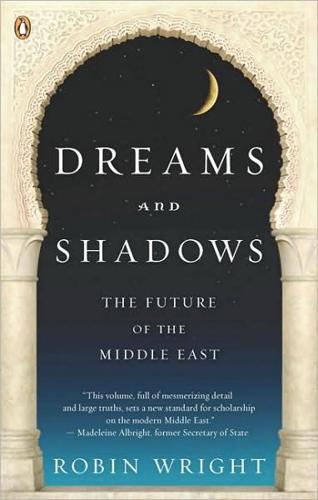
Dreams and Shadows: The Future of the Middle East
by
Robin Wright
Published 28 Feb 2008
For the next eighteen years, Iran reportedly worked on acquiring pieces and technology for a clandestine program. In 2002, however, it got caught. An exiled opposition group exposed research and development at two sites, Natanz and Arak. The sprawling desert facility in Natanz included preparations for uranium enrichment. Enriched at low levels, uranium can fuel reactors in a peaceful nuclear energy program. At high levels, it can be subverted for bomb-making. The dual-purpose technology presented a special conundrum for the outside world, as Iran definitely had been on a longstanding and legal quest for nuclear energy—a goal dating back to the monarchy.
…
The hard-liners and ideologues dominated the internal debate. And they were far less willing to buckle to the West. Tensions with the outside world quickly began building again. In 2006, Europe and the United States crafted a carrot-and-stick compromise with broad incentives: Iran could keep its energy program, but Russia would control the uranium enrichment fuel cycle to ensure that the key process was not diverted for a weapon. The West would also throw in economic and diplomatic perks, including talks that would bring the United States and Iran to the negotiating table for the first time in decades. The alternative was the threat of increasingly punitive United Nations sanctions.
…
It had happened in 2004, when eight British sailors were held for three days. But Britain claimed global satellite tracking proved its patrol boats were almost two miles inside Iraqi waters. The abduction was interesting in another respect. It came one day before the United Nations voted on a new resolution to impose sanctions on Tehran for failing to suspend uranium enrichment. The sanctions were narrow, targeting banks, institutions, and twenty-eight officials believed to be involved in Iran’s suspected nuclear program. Among the individuals were the top seven Revolutionary Guard commanders of its ground forces, navy, air force, intelligence unit, and Quds Force.
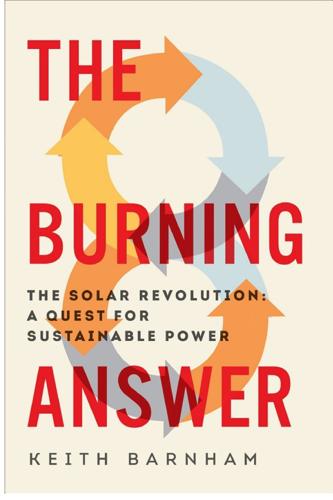
The Burning Answer: The Solar Revolution: A Quest for Sustainable Power
by
Keith Barnham
Published 7 May 2015
This is allowed if due notice is given to the safeguards authorities. In the 1980s vast amounts of depleted uranium (the waste left behind when uranium is enriched) belonging to the UK civil programme were removed from safeguards. Some was used to produce tritium for warheads. The depleted uranium was also used for hardening shells and strengthening tank armour. The investigative journalist John Pilger has highlighted the human cost of the radioactive debris from the use of UK depleted uranium in Iraq. Though depleted uranium is not as radioactive as enriched uranium, a suggestion has been made, which has yet to be experimentally verified, as to why it might be genetically damaging.
…
Fermi had produced the first controlled nuclear fission reaction. In one of the great ironies of science, Fermi achieved in Chicago in 1942 what had erroneously preoccupied his team in Rome in 1934. It is a sobering thought that had they guessed correctly eight years earlier, fascism might have triumphed in the Second World War. Both the uranium enrichment and the plutonium production approaches worked, but too late for the bomb to be used in the war in Europe. Uranium was used in the bomb that was dropped on Hiroshima. Plutonium was used in the bomb dropped on Nagasaki. This practical demonstration of the quantum revolution was infinitely more problematic, complex and more expensive than the discovery of semiconductors, which followed a few years later.
…
I have argued that it would be more appropriate to the needs of developing countries if Western and Chinese manufacturers were to compete in supplying solar factories. Solar technology might then become a tool of political influence, the ‘new nuclear’, with the great advantage that it cannot be used for weapons. In Iran for instance, I suggest that, in return for stopping all uranium enrichment activity, the US and EU should offer to build a solar cell factory and a wind turbine factory, each capable of manufacturing systems producing 1 GW of electrical power a year. This would cost less than a new nuclear reactor. Within ten years Iran could have around 15 GW of new electricity capacity, much more than its nuclear programme will produce in that time.

What We Say Goes: Conversations on U.S. Power in a Changing World
by
Noam Chomsky
and
David Barsamian
Published 1 Oct 2007
But the fact is, on the nuclear issue, they are the ones who offered negotiations. They are the ones who said that they would accept the two-state settlement on Israel-Palestine. But the United States is willing to “negotiate” only if Iran concedes the result of the negotiations before the negotiations begin. The negotiations are conditional on Iran stopping uranium enrichment, which it’s legally entitled to do, but which is supposed to be the goal of negotiations.38 So, yes, we’ll negotiate if they first concede in advance. And with a gun pointed at their heads, because we won’t withdraw the threats against Tehran. Washington has made that very clear. We continue the threats, which are a violation of the UN Charter.
…
This morning, the Boston Globe reported something that has been known around here for a long time. In 1974, presumably at U.S. government initiative, MIT made a deal with the shah of Iran to effectively lease the nuclear engineering department, or a large part of it, to Iran, to bring in lots of Iranian nuclear engineers and train them in the development of uranium enrichment and other techniques of nuclear development. In return, the shah, who was one of the most brutal tyrants of the period, with a horrible human rights record, would pay MIT at least half a million dollars. The article also points out that several of the engineers who were trained at MIT are now apparently running the Iranian nuclear programs.26 Those programs were strongly supported by the United States in the mid-1970s.
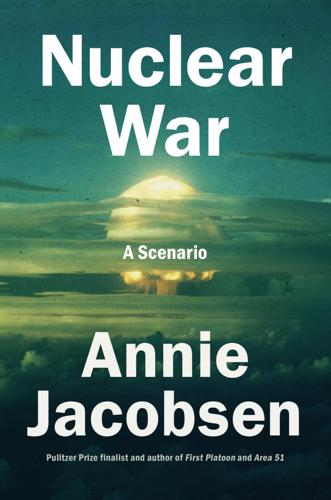
Nuclear War: A Scenario
by
Annie Jacobsen
Published 25 Mar 2024
And one must accept—and understand—that this is all but a speck of the mass carnage to follow, worldwide. Across North Korea, twenty more nuclear bombs strike the nation’s nuclear facilities. The Yongbyon Nuclear Scientific Research Center, in the central northwest, explodes in a nuclear fireball. This place houses a radiochemical lab, a uranium enrichment plant, and two nuclear reactors. And so, precisely what happened in Diablo Canyon roughly thirty minutes ago now happens here: nuclear core materials melt down. The Devil’s Scenario. To strike a nuclear reactor with any explosive weapon violates Rule 42 of the International Committee of the Red Cross.
…
In North Korea’s northern region, a nuclear bomb strikes the Punggye-ri nuclear test site, where underground tests conducted between 2006 and 2017 allowed North Korea to transform purchased or stolen nuclear plans into the sprawling nuclear weapons program that started this war. Punggye-ri is 110 miles from the Russian border, with Russia’s port city of Vladivostok just another 85 miles north. Kangson, a clandestine uranium enrichment site along the Pyongyang-Nampo Expressway, is hit. As is Sino-ri, an undeclared missile base in the mountains. Sangnam-ni and Musudan-ri missile launching sites, also within range of the Russian border, are struck in rapid succession. In a few more minutes an additional fifty ICBMs will strike North Korea, the fifty ICBMs that Russia mistook as 100 or more coming for them.
…
ICBMs International Committee of the Red Cross, 250 Iraq, 224 J “jamming the president,” 92 Jason scientists, 53–54 Jim Creek Naval Radio Station, 273 Joint Strategic Target Planning Staff, 24 Jornada del Muerto, 278 K K-114 Tula submarine, 235 Kangson uranium enrichment site, 251 Karako, Tom, 78 Kazbek communications system, 193, 208 Kehler, Robert, 82–83, 154, 166 Kennedy, John F., 87 Khrushchev, Nikita, 277 Kim Il Sung, 252–53 Kirby, Reid, 163, 261 KMS-4 (Kwangmyongsong-4) satellite, 255–56 KN-23 missile, 122–23 KNEECAP.
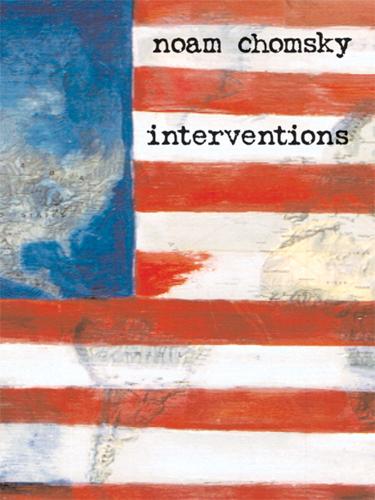
Interventions
by
Noam Chomsky
Included were “weapons of mass destruction, a two-state solution to the Israeli-Palestinian conflict, the future of Lebanon’s Hezbollah organization and cooperation with the UN nuclear safeguards agency,” the Financial Times reported last month (May 2006). The Bush administration refused, and reprimanded the Swiss diplomat who conveyed the offer.2 A year later, the European Union and Iran struck a bargain: Iran would suspend uranium enrichment, and in return Europe would provide assurances that the United States and Israel would not attack Iran. Apparently under U.S. pressure, Europe backed off, and Iran renewed its enrichment processes.3 As in the case of the 2003 offers, and others, there is only one way to determine whether Iran’s initiatives are serious: pursue them.

Days of Fire: Bush and Cheney in the White House
by
Peter Baker
Published 21 Oct 2013
On this morning, Cheney found a report from the Defense Intelligence Agency, or DIA, titled “Niamey Signed an Agreement to Sell 500 Tons of Uranium a Year to Baghdad.” The report, dated February 12, 2002, caught Cheney’s eye. Niamey was the capital of Niger, an African country with significant uranium deposits. Iraq had no civilian nuclear energy program, and the only reason it could want uranium from Africa was to fuel a bomb. The uranium would have to be enriched, no easy task and not one that Iraq had mastered. But if it were, five hundred tons by one calculation would be enough to make fifty weapons. The report was based on information from a foreign intelligence service, and Cheney asked his briefer to find out what the CIA thought of it. By this point, Cheney was hunting for evidence that Iraq had chemical, biological, and even nuclear weapons in violation of its obligations under the UN Security Council resolutions that followed the Gulf War.
…
He concluded his list by noting that “it is possible of course to prepare a similar illustrative list of all the potential problems that need to be considered if there is no regime change in Iraq.” THROUGH ALL OF this, a separate crisis was brewing with another member of the axis of evil. American intelligence agencies had uncovered evidence that North Korea had a secret uranium enrichment program in addition to the plutonium program it had suspended as part of the Agreed Framework negotiated with Bill Clinton. James Kelly, an assistant secretary of state, was instructed to confront the North Koreans during a trip to Pyongyang. When he did, the North Koreans responded in a way that Kelly took as confirmation.
…
The United States would drop its opposition to World Trade Organization membership talks for Iran and allow the sale of spare parts for American-made civilian airplanes. But they represented a sea change from the policy of confrontation Cheney had advocated in the first term. After all the talk of going it alone if necessary, Bush would now be letting the British, Germans, and French take the lead in pressuring Iran to give up uranium enrichment. Unlike with Andijan, this time Rice moved policy without a major clash. As she sat in the Oval Office one day describing her plan, even Cheney went along without protest. “That makes sense,” he said. The emergence of Rice underscored the evolution of Bush’s partnership with Cheney. “There certainly seemed to be a difference in their relationship,” Christine Todd Whitman observed from the outside.
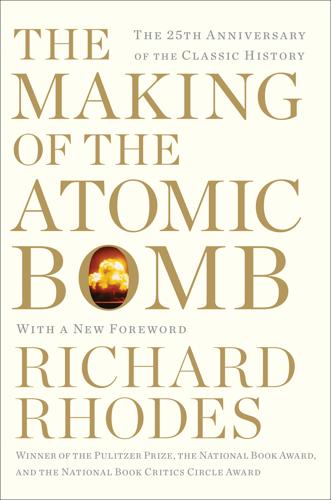
The Making of the Atomic Bomb
by
Richard Rhodes
Published 17 Sep 2012
When a stage was leakproof and otherwise ready it could be operated without further delay, and the first stage of the enormous K-25 cascade was charged with uranium hexafluoride on January 20, 1945. Enrichment by gaseous barrier diffusion in the most advanced automated industrial plant in the world had begun. It would proceed efficiently with only normal maintenance for decades. The pipes in Philip Abelson’s scaled-up thermal-diffusion plant, S-50, leaked so badly they had to be welded, which delayed production, but all twenty-one racks had begun enriching uranium by March. Juggling the different enrichment processes to produce maximum output in minimum time then became a complex mathematical and organizational challenge.
…
Emilio Segrè Foreword to the 25th Anniversary Edition More than seven decades after its conception under the looming storm front of the Second World War, the Manhattan Project is fading into myth. The massive production reactors and plutonium extraction canyons at Hanford, Washington; the half-mile-long uranium enrichment factory at Oak Ridge, Tennessee; the several hundred thousand workers who built and operated the vast machinery while managing to keep its purpose secret, disappear from view, leaving behind a bare nucleus of legend: a secret laboratory on a New Mexican mesa, Los Alamos, where the actual bombs were designed and built; a charismatic lab director, the American physicist Robert Oppenheimer, who rose to international prominence postwar until his enemies brought him low; a lone B-29 bomber incongruently named for the pilot’s mother, Enola Gay; a devastated city, Hiroshima, and poor ruined Nagasaki all but forgotten.
…
Divide a cylinder down its length with such a foil barrier, pump a gas of mixed isotopes into one side of the divided cylinder, and gas would diffuse through the barrier as it flowed from one end of the cylinder to the other. Compared to the gas left behind, the gas that diffused through the barrier would be selectively enriched in lighter isotopes. In the case of uranium hexafluoride the enrichment factor would be slight, 1.0043 under ideal conditions. But with enough repetitions of the process any degree of enrichment was possible, up to nearly 100 percent. The immediate problem, Simon saw, was barrier material. The smaller the holes, the higher the pressures a separation system could sustain, and the higher the pressure, the smaller the equipment could be.
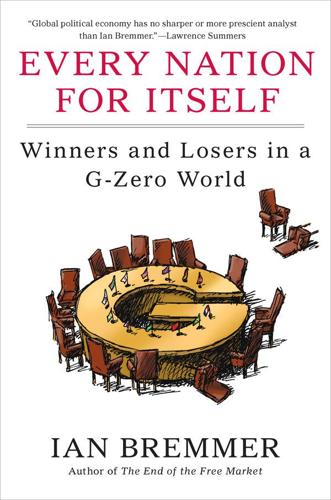
Every Nation for Itself: Winners and Losers in a G-Zero World
by
Ian Bremmer
Published 30 Apr 2012
Though some experts called it the most sophisticated malicious computer program ever seen, this weapon did not draw much media attention until experts discovered that among its many features is an ability to send nuclear centrifuges spinning out of control.38 As a result, many analysts now believe it was designed as part of a joint U.S.-Israeli project to disrupt the nuclear program under development in Iran, and senior U.S. and Israeli officials have since reported their belief that Iran’s uranium enrichment program has been significantly delayed. All this amounts to high, if mostly hidden, drama, but it’s just the latest episode in the nearly seven-decade battle to contain one of the world’s most complicated long-term problems. The two bombs that abruptly ended World War II marked the peak of American military dominance, but the U.S. atomic monopoly lasted just four years.
…
Between now and then, Iran will have to cope with a variety of international sanctions on the export of nuclear materials, missiles, and other military matériel; investment in oil, gas, and petrochemicals; and shipping, banking, and insurance transactions. The purpose of these sanctions is not simply to slow or halt Iran’s uranium enrichment program; it’s also to ensure that the next wave of would-be weapons states can see just how dangerous and expensive nuclear development in violation of international agreements can be. But too many governments are interested in Iran’s oil and gas to maintain effective sanctions on its energy trade.
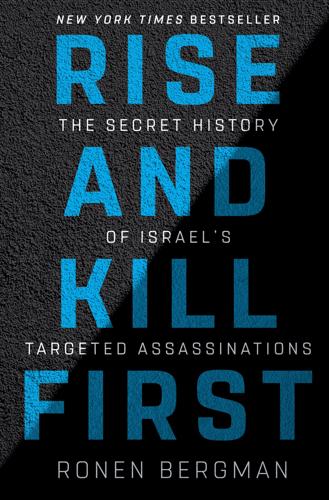
Rise and Kill First: The Secret History of Israel's Targeted Assassinations
by
Ronen Bergman
Published 30 Jan 2018
The two countries also embarked on an effort to identify Iranian purchases of equipment for the project, particularly items that Iran could not manufacture itself, and to stop the shipments from reaching their destination. This continued for years, through the Bush administration and into that of Barack Obama. But the Iranians were tenacious. In June 2009, the Mossad, together with U.S. and French intelligence, discovered that they had built another secret uranium enrichment facility, this one at Qom. Publicly, three months later, President Obama made a dramatic announcement and condemnation, and the economic sanctions were tightened further. Covertly, joint sabotage operations also managed to produce a series of breakdowns in Iranian equipment supplied to the nuclear project—computers stopped working, transformers burned out, centrifuges simply didn’t work properly.
…
Covertly, joint sabotage operations also managed to produce a series of breakdowns in Iranian equipment supplied to the nuclear project—computers stopped working, transformers burned out, centrifuges simply didn’t work properly. In the largest and most important joint operation by the Americans and the Israelis against Iran, dubbed “Olympic Games,” computer viruses, one of which became known as Stuxnet, caused severe damage to the nuclear project’s uranium enrichment machinery. The last component of Dagan’s plan—the targeted killing of scientists—was implemented by the Mossad on its own, since Dagan was aware that the United States would not agree to participate. The Mossad compiled a list of fifteen key researchers, mostly members of the “weapons group” that was responsible for developing a detonation device for the weapons, as targets for elimination.
…
In July 2011, a motorcyclist followed Darioush Rezaeinejad, a doctor of nuclear physics and a senior researcher for Iran’s Atomic Energy Organization, until he reached a point close to the Imam Ali Camp, one of the most fortified bases of the Revolutionary Guard, which contains an experimental uranium enrichment area. The biker drew a pistol and shot Rezaeinejad dead. In November 2011, a huge explosion occurred in another Revolutionary Guard base, thirty miles west of Tehran. The cloud of smoke was visible from the city, windows rattled, and satellite photos showed that almost the entire base had been obliterated.

Sandworm: A New Era of Cyberwar and the Hunt for the Kremlin's Most Dangerous Hackers
by
Andy Greenberg
Published 5 Nov 2019
According to some U.S. intelligence analysts, Stuxnet set back the Iranian nuclear program by a year or even two, giving the Obama administration crucial time to bring Iran to the bargaining table, culminating in a nuclear deal in 2015. But in fact, those long-term wins against Natanz’s operation weren’t so definitive. Even in spite of its confusion and mangled centrifuges, the facility actually increased its rate of uranium enrichment over the course of 2010, at times progressing toward bomb-worthy material at a rate 50 percent faster than it had in 2008. Stuxnet might have, if anything, only slowed the acceleration of Ahmadinejad’s program. And what was Stuxnet’s price? Most notably, it exposed to the world for the first time the full prowess and aggression of America’s—and to a lesser extent Israel’s—most elite state hackers.
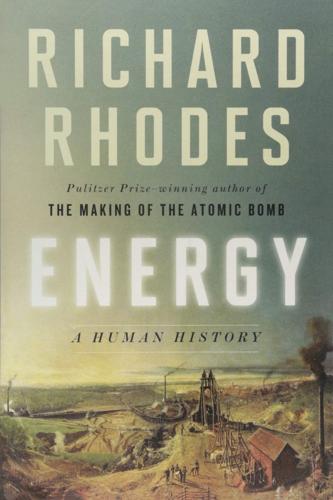
Energy: A Human History
by
Richard Rhodes
Published 28 May 2018
Natural uranium contains too little U235 to sustain a chain reaction with water moderation. To use water to moderate a reactor, the uranium fuel has to be enriched from .07 percent U235 to at least 3 percent U235. Uranium enrichment, which the United States’s Manhattan Project pioneered during World War II, was first used to make nearly pure U235 for the first atomic weapon, the bomb exploded over Hiroshima, Japan, on 6 August 1945. After the war, when the navy developed the first power reactors for nuclear submarines, it used uranium fuel enriched to a level of U235 sufficient to sustain a chain reaction with water moderation. The laboratory at the University of Chicago where Fermi built CP-1 worked during the early years of World War II to develop the technology of breeding plutonium.
…
Even more troublesome, the two isotopes are chemically identical, which means they can’t be separated using chemical means. They’re different physically: U238, with three more neutrons, is slightly heavier. So they can be laboriously separated by taking advantage of their slight difference in mass. Uranium isotope separation, also called enrichment, requires industrial-scale facilities such as factories full of centrifuges. There were no such factories in 1942. As Henry Ford had to build his first automobile in a world without automobile parts, so did Fermi have to work with natural uranium, somehow teasing a chain reaction from its scant content of U235.
…
The natural reactors were like the geysers of Yellowstone National Park, which cycle similarly because water seeps into underground magma chambers where the hot magma heats it to steam, which spouts up through natural channels in the overburden and sprays into the air, emptying the underground chambers and shutting down the geysering. Then water seeps into the magma chambers again, and the cycle repeats. In May 1972 a staff member at the Eurodif uranium-enrichment plant in Pierrelatte, France, first noticed the discrepancy that led to the discovery of the Gabon reactors: analyzing a standard sample prepared from uranium ore, he was surprised to find it slightly depleted in U235. Checking other samples, Eurodif found U235 similarly missing in ore shipments from Gabon going back to 1970.

Physics of the Future: How Science Will Shape Human Destiny and Our Daily Lives by the Year 2100
by
Michio Kaku
Published 15 Mar 2011
The danger is that nuclear weapons technology will proliferate into some of the most unstable regions of the world. During World War II, only the greatest nations on earth had the resources, know-how, and capability to create an atomic bomb. However, in the future, the threshold could be dramatically lowered as the price of uranium enrichment plummets due to the introduction of new technologies. This is the danger we face: newer and cheaper technologies may place the atomic bomb into unstable hands. The key to building the atomic bomb is to secure large quantities of uranium ore and then purify it. This means separating uranium 238 (which makes up 99.3 percent of naturally occurring uranium) from uranium 235, which is suitable for an atomic bomb but makes up only .7 percent.
…
In the 1980s and 1990s, the United States, France, Britain, Germany, South Africa, and Japan attempted to master this difficult technology and were unsuccessful. In the United States, one attempt actually involved 500 scientists and $2 billion. But in 2006, Australian scientists announced that not only have they solved the problem, they intend to commercialize it. Since 30 percent of the cost of uranium fuel comes from the enrichment process, the Australian company Silex thinks there could be a market for this technology. Silex even signed a contract with General Electric to begin commercialization. Eventually, they hope to produce up to one-third of the world’s uranium using this method. In 2008, GE Hitachi Nuclear Energy announced plans to build the first commercial laser enrichment plant in Wilmington, North Carolina, by 2012.
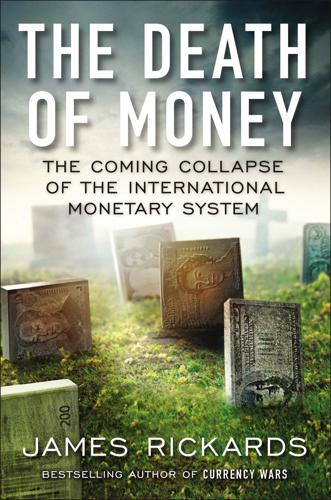
The Death of Money: The Coming Collapse of the International Monetary System
by
James Rickards
Published 7 Apr 2014
The Syrian government was forced to conduct business in the currencies of its three principal allies—Iranian rials, Russian rubles, and Chinese yuan—because the Syrian pound had practically ceased to function as a medium of exchange. By late 2013, the financial damage in Iran led to an agreement between President Obama and Iranian president Hassan Rouhani, which eased U.S. financial attacks in exchange for Iranian concessions on its uranium enrichment programs. Iran had suffered from the sanctions, but it had not collapsed, and now it had met the United States at the negotiating table. In particular, sanctions on gold purchases by Iran were removed, enabling Iran to stockpile gold using the dollar proceeds from oil sales. President Obama made it clear that although sanctions were eased, they could be reimposed if Iran failed to live up to its promises to scale back its nuclear programs.
…
Chinese president Hu Jintao and Russian president Dmitry Medvedev used the occasion of the SCO and BRICS summits to sign a joint Sino-Russian declaration calling for reform of the global financial system and international financial institutions and greater developing economy representation in the IMF. Newly elected Iranian president Hassan Rouhani had a kind of international coming-out party at the SCO summit in Kyrgyzstan’s capital, Bishkek, on September 13, 2013. At the summit, Iran received strong support from Russia, China, and the rest of the SCO for noninterference in Iran’s uranium-enrichment efforts. As geopolitics are increasingly played out in the realm of international economics rather than purely military-diplomatic spheres, the SCO’s evolution from a security alliance to a potential monetary zone should be expected. This has already happened covertly through Russian and Chinese banks’ role in facilitating Iranian hard-currency transactions, despite sanctions on Iranian money transfers imposed by the United States and the EU.
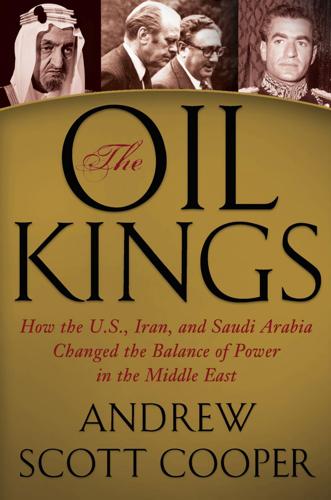
The Oil Kings: How the U.S., Iran, and Saudi Arabia Changed the Balance of Power in the Middle East
by
Andrew Scott Cooper
Published 8 Aug 2011
Kissinger viewed the Shah’s nuclear ambitions, as he did oil prices and arms sales, in purely tactical terms. Shultz’s Iran trip had the dual purpose of following up on the oil talks while selling the Shah on the idea of building a U.S.-based uranium enrichment facility. “Also, at our instigation, approaches have been made by the Bechtel Corporation to Iran to encourage the Shah’s investment (on the order of $300 million) in a private uranium enrichment plant to be built in the United States,” Kissinger was reminded by an aide in December 1974. The administration calculated that if the Shah went ahead and acquired half his nuclear power program from the United States, the equivalent of between six and eight nuclear power plants, the United States stood to earn $6.4 billion in revenues.
…
Three months earlier Iran had entered into a secret pact with South Africa to buy enough uranium to power up to a hundred nuclear power plants at an estimated cost of between $700 million and $1 billion. Under the terms of the deal Iran would help to finance the construction in South Africa of a big new uranium enrichment facility. The South Africans would supply Iran with ore from its occupied territory of Namibia. The Ford administration had agreed to sell Iran eight nuclear power plants but opposed granting Iran the right to reprocess uranium in Iranian-built and managed facilities. The Shah’s South Africa deal directly challenged U.S. domination of the international uranium trade.
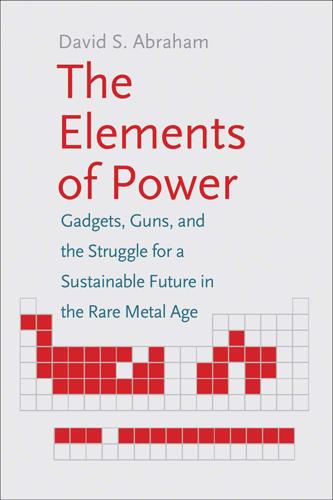
The Elements of Power: Gadgets, Guns, and the Struggle for a Sustainable Future in the Rare Metal Age
by
David S. Abraham
Published 27 Oct 2015
Sillamäe, “History: Sillamäe Linn,” accessed December 17, 2014, http://www.sillamae.ee/en/web/eng/history. 3. Sillamäe, “Secret Period: Sillamäe Linn,” accessed December 18, 2014, http://www.sillamae.ee/en/web/eng/secret-period; Olaf Mertelsmann, “The Uranium Enrichment Factory in Sillamäe (Kombinat 7),” Estonica, January 28, 2009, http://www.estonica.org/en/The_Uranium_Enrichment_Factory_in_Sillam%C3%A4e_Kombinat_7/. 4. “Tech Topics: The Leading Edge,” Kemet, September, 2001, Vol 11, No. 1, http://www.kemet.com/Lists/TechnicalArticles/Attachments/143/V11N01%20Nb%20vs%20Ta%20Capacitors.pdf; David O’Brock, interview by David Abraham, Sillamäe, Estonia, January 22, 2013; Sally Lowder, “David Trueman: The Ups and Downs of Minor Metal Investing,” Gold Report, July 5, 2011, accessed December 18, 2014, http://www.theaureport.com/pub/na/david-trueman-the-ups-and-downs-of-minor-metal-investing. 5.

Energy and Civilization: A History
by
Vaclav Smil
Published 11 May 2017
Explore 15 years of power outages. http://insideenergy.org/2014/08/18/data-explore-15-years-of-power-outages/. WNA (World Nuclear Association). 2014. Decommissioning nuclear facilities. http://www.world-nuclear.org/info/nuclear-fuel-cycle/nuclear-wastes/decommissioning-nuclear-facilities. WNA. 2015a. Uranium enrichment. http://www.world-nuclear.org/info/Nuclear-Fuel-Cycle/Conversion-Enrichment-and-Fabrication/Uranium-Enrichment. WNA. 2015b. World nuclear power reactors & uranium requirements. http://www.world-nuclear.org/info/Facts-and-Figures/World-Nuclear-Power-Reactors-and-Uranium-Requirements. Wolfe, D. A., and A. Bramwell. 2008. Innovation, creativity and governance: Social dynamics of economic performance in city-regions.
…
Fortunately, the costs of nuclear warhead decommissioning can be much reduced by reusing the recovered fissile material for electricity generation (WNA 2014). Highly enriched uranium (HEU, containing at least 20% and up to 90% U-235) is blended down with depleted uranium (mostly U-238), natural uranium (0.7% U-235), or partially enriched uranium to produce low-enriched uranium (<5% U-235) used for power reactors. According to a 1993 agreement between the United States and Russia (megatons for megawatts), Russia converted 500 t of HEU from its warheads and strategic stockpiles (equivalent to around 20,000 nuclear bombs) to reactor-ready fuel (averaging about 4.4% U-235) and sold it to power the U.S. civilian reactors.
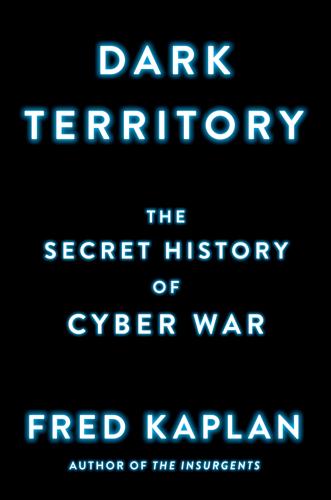
Dark Territory: The Secret History of Cyber War
by
Fred Kaplan
Published 1 Mar 2016
In the cyber age, once they hacked a computer, they could prowl the entire network connected to it; and, once inside the network, they could not only read or download scads of information; they could change its content—disrupt, corrupt, or erase it—and mislead or disorient the officials who relied on it. Once the workings of almost everything in life were controlled by or through computers—the guidance systems of smart bombs, the centrifuges in a uranium-enrichment lab, the control valves of a dam, the financial transactions of banks, even the internal mechanics of cars, thermostats, burglary alarms, toasters—hacking into a network gave a spy or cyber warrior the power to control those centrifuges, dams, and transactions: to switch their settings, slow them down, speed them up, or disable, even destroy them.
…
From the outset of his presidency, Obama articulated, and usually followed, a philosophy on the use of force: he was willing to take military action, if national interests demanded it and if the risks were fairly low; but unless vital interests were at stake, he was averse to sending in thousands of American troops, especially given the waste and drain of the two wars he inherited in Afghanistan and Iraq. The two secret programs that Bush pressed him to continue—drone strikes against jihadists and cyber sabotage of a uranium-enrichment plant in Iran—fit Obama’s comfort zone: both served a national interest, and neither risked American lives. Once in the White House, Obama expressed a few qualms about the plan: he wanted assurances that, when the worm infected the Natanz reactor, it wouldn’t also put out the lights in nearby power plants, hospitals, or other civilian facilities.
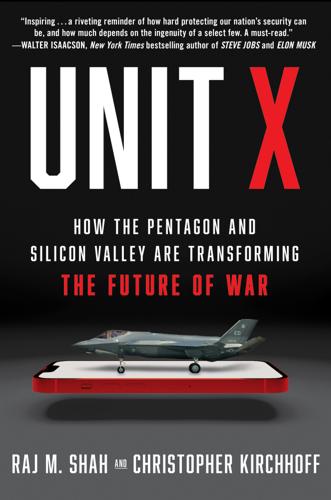
Unit X: How the Pentagon and Silicon Valley Are Transforming the Future of War
by
Raj M. Shah
and
Christopher Kirchhoff
Published 8 Jul 2024
In November 2010, in response to a South Korean artillery exercise in disputed waters near Yeonpyeong Island, North Korean military fired 170 artillery and rocket shells at the island. South Korea fired back at North Korean forces. The back-and-forth led to four deaths and twenty-two injured, as well as damage to the island, which Chris and the DIB were able to inspect firsthand. The incident took place just days after North Korea unveiled a new uranium enrichment facility, a threat serious enough that the South Korean government pondered asking the U.S. to station tactical nukes in South Korea. Soon thereafter Kim Jong-il announced that his son, Kim Jong-un, would be his successor as supreme leader of North Korea. By the time Chris visited in 2017, Brooks assessed that Kim Jong-un had become more dangerous than his father, Kim Jong-il, or grandfather, Kim Il-sung.
…
Start-Ups, Worrying the Pentagon,” 150 “Tiny Satellites from Silicon Valley May Help Track North Korean Missiles,” 92 “Why Silicon Valley Must Go to War,” 120 Nexla, 181 Ng, Andrew, 121 Nixon, Richard, 136 NOAA (National Oceanic and Atmospheric Administration), 111 Nolan, Christopher, 225 North Korea, 73 drones and, 98, 214 KN-08 truck-mounted ICBM, 73–74, 76, 78, 79, 87, 98 McCord and war-game analysis, 119 new uranium enrichment facility, 90 nuclear weapons and, 73, 75, 90–91 threat to South Korea, 89–92, 98 threat to the U.S., 75, 78–79 U.S. need for surveillance of, 74, 79, 80, 81, 86, 98, 98 U.S. surveillance, DIU and SAR sensor project, 74–98 Northrop Grumman, 5, 53 B-21 strategic bomber, 216 CAOC software overhaul and, 53, 63, 64, 66–67 DIUx and Kessel Run, 67–70, 102 effort to shut down DIUx, 59–60, 65 Slapshot app, 69 software and, 53 Ukraine War and, 215 NSA (National Security Agency), 6, 7 NSC (National Security Council) Brown advises on China investing, 150 Kirchhoff as lead strategist for technology, 2, 13, 62 Kirchhoff’s paper on technology and, 168–69 Kirchhoff’s recommendation, 170 Korea’s nuclear threat and, 75 Pottinger and, 141 technology strategy of 2016, 140 NSCAI (National Security Commission on Artificial Intelligence), ix, xi, 143–48, 155–59, 168, 206 Bajraktari, executive director, 145–46 final report and CHIPS Act, 173–76 first executive session, 147–48 first meeting, 146–47 Global Emerging Technology Summit (2021), 173–75 interim report, 157–59 Kirchhoff and, 144–45 national AI strategy by, 175–76 Schmidt and, 143–45, 147–48, 155–57 Schmidt-Fu Ying meeting, 162–68 staff for, 157 Trump meeting with, 159 U.S.

The Internationalists: How a Radical Plan to Outlaw War Remade the World
by
Oona A. Hathaway
and
Scott J. Shapiro
Published 11 Sep 2017
It would remove two thirds of the centrifuges, maintain low levels of enrichment for at least fifteen years, reduce its stockpile of enriched uranium by 98 percent, and allow comprehensive access to the International Atomic Energy Agency (IAEA) to monitor compliance. A year after the agreement, in May 2016, the IAEA found that Iran had lived up to its commitments. Iran went from over 19,000 uranium enrichment centrifuges to just 5,060. It ended uranium enrichment and removed all nuclear material from its once secret facility at Fordow. It reduced its stockpile of enriched uranium and filled the core of its heavy-water reactor at Arak with concrete, making it permanently inoperable. Together, these terms increased Iran’s “breakout time”—the period to produce enough fissile material for a single nuclear weapon—from about two to three months to at least one year.93 Although critics complained that the deal still allowed Iran to enrich nuclear material, some later acknowledged that it had succeeded in eliminating an imminent threat.
…
Outcasting, after all, is not very effective if carried out by a single state—even one as powerful as the United States. The more states participate, the more effective the sanction. The turning point for Iran came in 2006, when the U.N. Security Council joined the American effort. It demanded that Iran stop uranium enrichment and imposed progressively painful sanctions in response to its continued intransigence.61 As a result, Iran was shut out not only by the United States and a few sympathetic countries but by nearly every nation in the world. But there was another crucial step, as well: an innovation in the technology of outcasting.
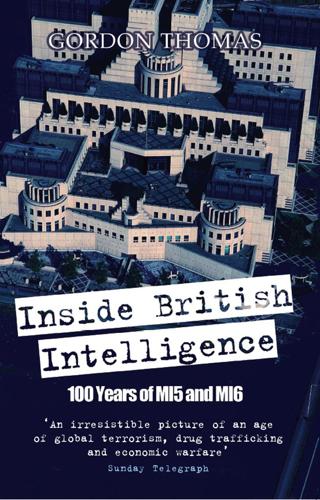
Inside British Intelligence
by
Gordon Thomas
On arrival they were absorbed into the Witness Protection Program and assured that for the foreseeable future they would be among the most protected of all American citizens. MEANWHILE, ANALYSTS ON THE IRAN DESK in Vauxhall Cross continued to study Israel’s plans to launch a preemptive strike against Iran’s three prime uranium enrichment facilities: Natanz; a uranium conversion site at Isfahan; and the heavy water reactor at Arak. Low-yield bunker-busting bombs would be used against Natanz, as the facility was buried deep underground. It would be the first time since 1945, when the United States dropped atomic bombs on Hiroshima and Nagasaki, that nuclear weapons would be used.

Chernobyl: The History of a Nuclear Catastrophe
by
Serhii Plokhy
Published 1 Mar 2018
In the corridors of power, however, the VVER reactors lost in competition with the RBMK, or High Power Channel Reactor, which used graphite to moderate the reaction and water as a coolant. The RBMK reactors had an output of 1,000 megawatts of electrical energy, twice that of the VVERs. And they were not only more powerful but also cheaper to build and operate. Whereas VVER reactors required enriched uranium, RBMK reactors were designed to run on almost natural uranium-238, with an enrichment level of a mere 2 to 3 percent of uranium-235. Last but not least, the RBMK reactors could be constructed on the spot from prefabricated components produced by machine-building plants that did not specialize in the production of high-precision equipment for the nuclear industry. As far as the party leadership in Moscow was concerned, it was a win-win situation.
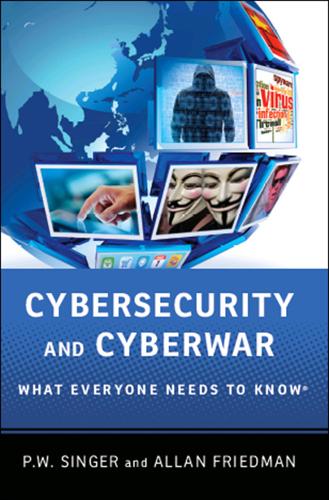
Cybersecurity: What Everyone Needs to Know
by
P. W. Singer
and
Allan Friedman
Published 3 Jan 2014
In the variety of attacks cited by the senators above, the Citigroup attackers wanted account details about bank customers with an ultimate goal of financial theft. In the attack on RSA, the attackers wanted key business secrets in order to spy on other companies. For Stuxnet (a case we’ll explore further in Part II), the attackers wanted to disrupt industrial control processes involved in uranium enrichment, so as to sabotage the Iranian nuclear program. Finally, it is useful to acknowledge when the danger comes from one of your own. As cases like Bradley Manning and WikiLeaks or Edward Snowden and the NSA scandal illustrate, the “insider threat” is particularly tough because the actor can search for vulnerabilities from within systems designed only to be used by trusted actors.
…
This precision becomes even more important if the attack is to interfere with physical processes. In the case of Stuxnet, for example, many believe that practice was needed to understand how the software would deploy and how altering the industrial controllers would impact the targeted process of uranium enrichment. Reportedly, the new cyberweapon was tested at Israel’s secretive nuclear facility in Dimona. As one source told the New York Times about the test effort, “To check out the worm, you have to know the machines.… The reason the worm has been effective is that the Israelis tried it out.” On the defensive side, vulnerability tests and practice exercises are quite valuable for the actors in cyberspace that range from militaries to private companies.
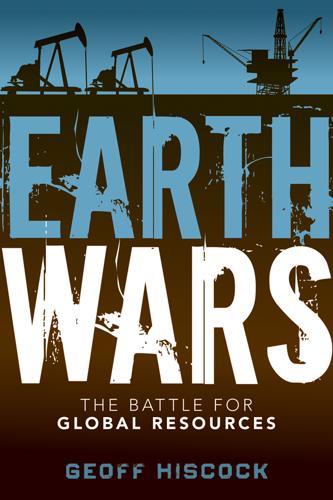
Earth Wars: The Battle for Global Resources
by
Geoff Hiscock
Published 23 Apr 2012
Brazil has about 5 percent of the world’s known uranium reserves, and all output is used domestically after enrichment overseas. State-owned Industrias Nucleares do Brazil (INB) operates the Lagoa Real/Caetite mine in Bahia state, and a second mine Itataia/Santa Quiteria in Ceara state. Brazil has a significant capability in uranium enrichment and fuel fabrication at Resende in Rio de Janeiro state, and is also working on the development of advanced reactor designs and systems. No private investment in nuclear power is allowed. A secret nuclear weapons program embarked on by Brazil’s military government in the 1970s was abandoned by the civilian administration in the 1980s, and Brazil subsequently renounced any interest in developing nuclear weapons.

Who Rules the World?
by
Noam Chomsky
In Europe, polls show that Israel is regarded as the leading threat to peace.27 In the MENA countries, that status is shared with the United States, to the extent that in Egypt, on the eve of the Tahrir Square uprising, 80 percent of the population felt that the region would be more secure if Iran had nuclear weapons.28 The same polls found that only 10 percent of Egyptians regard Iran as a threat—unlike the ruling dictators, who have their own concerns.29 In the United States, before the massive propaganda campaigns of the past few years, a majority of the population agreed with most of the world that, as a signatory to the Non-Proliferation Treaty, Iran has a right to carry out uranium enrichment. Even today, a significant majority favors peaceful means for dealing with Iran. There is even strong opposition to military engagement if Iran and Israel are at war. Only a quarter of Americans regard Iran as an important concern for the United States.30 But it is not unusual for there to be a gap—often a chasm—dividing public opinion and policy.

How to Run the World: Charting a Course to the Next Renaissance
by
Parag Khanna
Published 11 Jan 2011
Many assert that America’s approach to Iran and North Korea has been that of a reckless gorilla, but if anything it has been too narrow and cautious, focused on containment and isolation rather than on engagement and resolution. Each encounter between American and Iranian officials has been suffused with a significance rivaled only by an extraterrestrial encounter. Demanding that no negotiations would take place until Iran suspended its uranium enrichment program and allowed full inspections wasted three years during which enrichment accelerated. The so-called carrot-and-stick approach to Iran has been a self-serving euphemism for coercion, since the preconditions for negotiation are already too patronizing for the Iranians. As one Iranian scholar put it, “No more carrots and no more sticks—and please no more sticks in the shape of carrots either.”
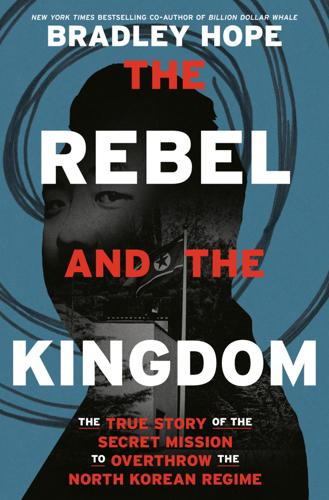
The Rebel and the Kingdom: The True Story of the Secret Mission to Overthrow the North Korean Regime
by
Bradley Hope
Published 1 Nov 2022
By February, an eighteen-foot statue and a nearly four-hundred-foot rock carving were unveiled on what would have been his seventieth birthday. Then there was a flicker of hope about the possibility of a new round of talks in February. On the twenty-ninth, North Korea even went so far as to announce it was suspending its nuclear-weapon and ballistic-missile tests and uranium enrichment while also granting international inspectors access to its nuclear sites. Like clockwork, it all came undone with a new round of provocations. Just two weeks later, North Korea announced a long-range rocket launch, and Barack Obama, on a visit to Seoul, said, “North Korea will achieve nothing by threats.”

Whiplash: How to Survive Our Faster Future
by
Joi Ito
and
Jeff Howe
Published 6 Dec 2016
It was the first time anyone had seen malware that targeted the customized software that is used to control industrial machineries such as turbines and presses. After months of relentless analysis it became apparent that the code targeting these supervisory control and data acquisition (SCADA) systems had a very specific purpose: to disrupt the process of uranium enrichment in nuclear facilities. When the centrifuges connected to the system met certain conditions, the malware would forcibly alter the rotation speed of the motors, ultimately causing the centrifuges to break years before their normal life span. More importantly, the centrifuges would fail to properly enrich the uranium samples.

A World in Disarray: American Foreign Policy and the Crisis of the Old Order
by
Richard Haass
Published 10 Jan 2017
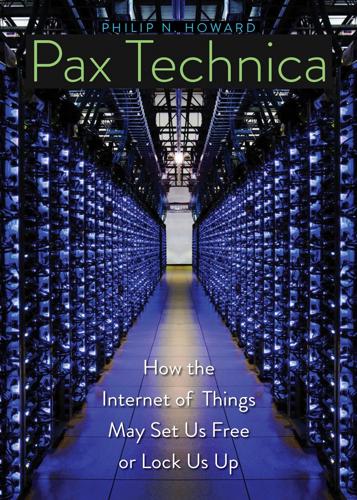
Pax Technica: How the Internet of Things May Set Us Free or Lock Us Up
by
Philip N. Howard
Published 27 Apr 2015
One attack crippled the world’s most valuable company, the $10 trillion Saudi oil firm Aramco. Hackers wiped out data on three-quarters of the company’s computers.9 The attack was probably launched by Iran, and it came on a carefully chosen day when the impact would be severe. Stuxnet, the virus that crippled Iran’s uranium enrichment centrifuges, was probably developed by the United States and Israel.10 The same team that produced Stuxnet probably also produced the viruses Flame and Gauss, all of which have some shared code.11 These more recent viruses have basic data-mining goals, and Gauss seems to be targeting Lebanese banks.

Never Split the Difference: Negotiating as if Your Life Depended on It
by
Chris Voss
and
Tahl Raz
Published 3 Oct 1989
After initially pointing out the obvious—that he’d happily signed the deal—Disney made the dramatic gesture of sending the star a Picasso painting worth a reported $1 million. The nation of Iran was not so lucky. In recent years, Iran has put up with sanctions that have cost it well over $100 billion in foreign investment and oil revenue in order to defend a uranium-enriching nuclear program that can only meet 2 percent of its energy needs. In other words, like the students who won’t take a free $1 because the offer seems insulting, Iran has screwed itself out of its chief source of income—oil and gas revenue—in order to pursue an energy project with little expected payoff.

The Driver in the Driverless Car: How Our Technology Choices Will Create the Future
by
Vivek Wadhwa
and
Alex Salkever
Published 2 Apr 2017
As high-speed, ubiquitous connectivity among all manner of devices binds us more tightly to technology and to the Internet, a crucial and frightening mega-trend for the next two decades is that cyber security will become a more important domestic-security issue. In 2007, the Stuxnet computer worm sent costly and critically important centrifuges spinning wildly out of control at Natanz, a secret uranium-enrichment facility in Iran.2 In a matter of months, American and Israeli security forces were able to remotely destroy 1,000 of the 5,000 centrifuges Iran had spinning at the time to purify uranium. The government program behind the virus, code-named “Olympic Games,” was developed during the Bush and Obama Administrations.

The Fifth Risk
by
Michael Lewis
Published 1 Oct 2018
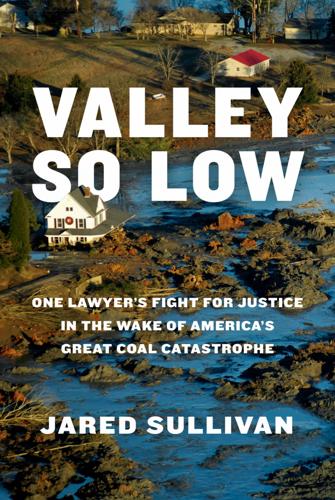
Valley So Low: One Lawyer's Fight for Justice in the Wake of America's Great Coal Catastrophe
by
Jared Sullivan
Published 15 Oct 2024
The cheap, abundant power that TVA generated with its dams spurred industry that benefited the valley. Per capita income rose from about 45 percent of the national average in 1933 to roughly 60 percent less than two decades later. For TVA, the trouble was that, after the Second World War, it needed more electricity than its dams could produce. This partly owed to several sprawling uranium-enrichment facilities that the federal government had built in Oak Ridge, Tennessee, as part of the Manhattan Project, for which TVA supplied power. The Cold War and the Korean War spiked demand for the bomb fuel produced in Oak Ridge, and the need for TVA electricity rose accordingly. In short order, TVA constructed eleven of the world’s largest, most technologically advanced coal-fired power plants throughout Alabama, Tennessee, and Kentucky.
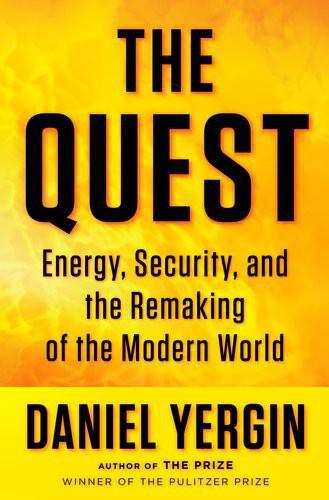
The Quest: Energy, Security, and the Remaking of the Modern World
by
Daniel Yergin
Published 14 May 2011
Iran’s repeated assertion that its nuclear program is for peaceful purposes is met with total disbelief by its Arab neighbors. Ahmadinejad has also accelerated the development of missiles, some of which could carry nuclear payloads. The nuclear program entered a new phase in 2006 with the activation of a large number of centrifuges to enrich uranium. Enrichment is the process by which the ratio of the U-235 isotope to the far more common U-238 is increased. A 3 percent to 5 percent U-235 concentration is required to provide the fuel for a civilian nuclear reactor. A 20 percent level is needed for medical purposes. An atomic bomb needs 90 percent. It is much easier, once having reached the 20 percent level, to go from 20 percent to 90 percent than it is to go the initial distance from 3 percent to 20.
…
The light-water reactor is the basis for about 90 percent of the 440 or so nuclear reactors currently operational in the world, and virtually all those presently planned. Whatever the coolant, it is typical to speak of the nuclear-fuel cycle. For the light-water reactor, the cycle begins with the mining of uranium and then moves to enrichment to increase the concentration of the isotope U-235 to a level that will be able to sustain a controlled chain reaction. This more-concentrated fuel is then fabricated into fuel rods that will be inserted into the reactor. The cycle continues through the use of the fuel in the reactor all the way through to the deposition of the spent fuel in some form of storage or possible reuse.
…
Ulam, Stanislaw unemployment in Iraq Union of Soviet Socialist Republics (USSR), see Soviet Union unipolar world United Airlines United Arab Emirates (UAE) United Kingdom (UK) see also Great Britain United Nations climate change and Eisenhower’s address at (Dec. 1953) First Gulf War and General Assembly of Iran and JFK’s address to Oil-for-Food Programme established by sanctions program of Security Council of weapons inspectors of United Nations Conference on Environment and Development, see Earth Summit United Nations Development Program United Nations Framework Convention on Climate Change United States antitrust in arms buildup of biofuels in blackouts in buildings in cars in Caspian Derby and climate change and coal and cyberattack and deepwater production in demand for oil in demand shock and deregulation in East Coast of economy of elections in electricity in electricity in, completion of electricity in, “unintended hybrid” system of emergency stimulus package in energy efficiency in energy independence and energy security of female voting rights in financial crisis and foreign relations of, see specific countries gasoline prices in global supply chains and Great Depression in Great Game and Great Recession in hostage crisis and Hurricane Katrina in Iraq War and LNG and Malacca Strait and Mid-Atlantic states in Midwest in national security of natural gas of Nigerian oil and 9/11 and Northeast in nuclear accident in nuclear navy of nuclear power in nuclear weapons of oil consumption in oil discoveries in oil exports of oil imports of oil sands and oil shale in peak production predicted for price controls in R&D in renewables in shale gas in Southeast in Southwest in Soviet collapse and in space race stability and Standard Oil Trust in Strait of Hormuz and Strategic Petroleum Reserve in Tengiz oil field and tight oil in total energy consumption of total energy of unipolar world and venture capital in West in in World War II, United States Bureau of Mines United Technologies Unocal Upton, Fred uranium enrichment of urbanization Urengoy field U.S. Climate Action Partnership (USCAP) U.S. Windpower Vanguard program Varadi, Peter variable-speed technology Vekselberg, Viktor Velasco Alvarado, Juan Venezuela aggregate disruption and amnesty in Boesi painting and Chávez in China’s relations with coups in economy and economic growth in election of 1998 in general strike in la apertura in nationalization in oil of Pérez reforms in as petro-state population increase in poverty in unconventional oil in U.S. relations with Venter, Craig venture capital, venture-capital investing in cleantech Doriot and photovoltaics and start of energy focus of Western growth of Venus Vermont vertically integrated companies Vestas Vienna Vietnam Villach meeting (1985) Vilsack, Tom Vogtle nuclear power plant Volkswagen Volvo Vostok Voyages dan les Alpes (Sassure) Wagoner, Rick Wall Street Walton, John T.
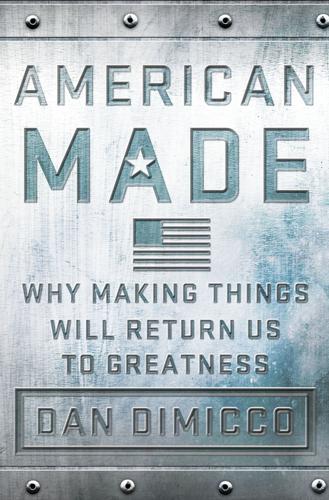
American Made: Why Making Things Will Return Us to Greatness
by
Dan Dimicco
Published 3 Mar 2015
I switched to metallurgy and materials science, because I figured NASA would need people who understood alloys, stresses, and heat as much as they needed electrical engineers. I graduated from college just as the Apollo program was winding down. But happily, NASA was developing a space station—Skylab—and the space shuttle program was well underway. I interviewed with General Electric at its uranium enrichment facility in Wilmington, North Carolina, and in Massachusetts, where the company did its research and development work. But truth be told, I felt like I didn’t know enough when I got my bachelor’s degree. Graduate school seemed like the way to go. I applied to business schools and engineering schools, and got accepted into several of both, including Brown’s engineering school and the University of Pennsylvania.
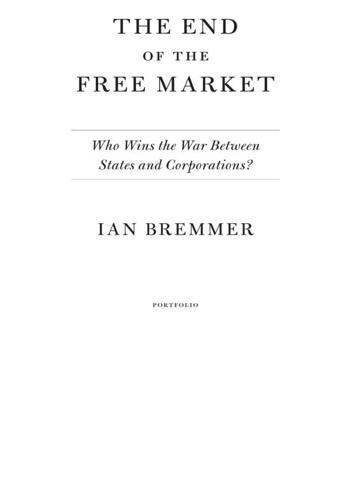
The End of the Free Market: Who Wins the War Between States and Corporations?
by
Ian Bremmer
Published 12 May 2010
Energy consumers will continue to turn to America, which has the world’s only global naval presence, to ensure the free flow of oil and gas supplies on which their economic futures depend. The U.S. provision of global public goods will also extend to new military challenges. As Iran masters uranium-enrichment technology, some of its Arab neighbors will rely even more heavily on Washington to guarantee their security and to help them avoid the costs that come with a nuclear arms race. As governments in Eastern Europe worry over threats of Russian expansionism—an anxiety heightened by dependence on Russia’s natural gas, Moscow’s demonstrated willingness to bully its neighbors by turning off the taps, and its conflict with Georgia in August 2008—they will increasingly turn to a U.S.

Genius: The Life and Science of Richard Feynman
by
James Gleick
Published 1 Jan 1992
To make a call one had to turn a crank on the side of the box. As he sat waiting for the military police to approve his pass, Feynman was running through some calculations for the hypothetical in-between reactor that would be called a water boiler. Instead of blocks of uranium interspersed with graphite, this unit would use a uranium solution in water, uranium enriched with a high concentration of the 235 isotope. The hydrogen in the water would increase the effectiveness many times over. He was trying to figure out how much uranium would be needed. He worked on the water-boiler problem, picking it up and putting it down again over the next weeks, thinking about the detailed geometry of neutrons colliding in hydrogen.
…
Every atom was its own tiny bomb: it split with a jolt of energy and released more neutrons to trigger its neighbors. The neutrons tended to slow, however, dropping below the necessary threshold for further fission. The chain reaction would not sustain itself. However, the rarer isotope, uranium 235, would fission when struck by a slow neutron. If a mass of uranium were enriched with these more volatile atoms, neutrons would find more targets and chain reactions would live longer. Pure uranium 235—though it would not be available in any but microscopic quantities for months—would make an explosive reaction possible. Another way to encourage a chain reaction was to surround the radioactive mass with a shell of metal, a tamper, that would reflect neutrons back toward the center, intensifying their effects as the glass of a greenhouse intensifies its infrared warming.

The Power of Geography: Ten Maps That Reveal the Future of Our World
by
Tim Marshall
Published 14 Oct 2021
In 2001 President George Bush engaged in his own labelling, describing Iran as part of an ‘axis of evil’, and claiming that its nuclear energy facilities were a cover for building a nuclear weapons arsenal. Tehran already had missiles capable of reaching targets more than 5,000 kilometres away, so the idea that they might be nuclear-tipped alarmed everyone within range. In 2002 an Iranian dissident group revealed that Tehran was building a uranium-enrichment complex and a heavy-water facility, both of which can be used to make nuclear weapons. The government insisted its nuclear activity was only for peaceful purposes. Few in the international community were convinced, especially after an International Atomic Energy Agency report said that the enrichment process suggested Iran was seeking weapons-grade material.

The Hacker and the State: Cyber Attacks and the New Normal of Geopolitics
by
Ben Buchanan
Published 25 Feb 2020
Noting the number of uses within the code of the word “crash” and its ability to override key industrial control system processes, researchers at Dragos, a leading industrial control system security company, named it CRASHOVERRIDE. To make CRASHOVERRIDE so powerful, clearly its creators had studied previous attempts at targeting industrial control systems. The most infamous of these attempts was Stuxnet. As Chapter 6 showed, Stuxnet’s architects exhibited a deep understanding of the Iranians’ industrial processes for uranium enrichment. They understood how the centrifuges worked and how illicit computer code could manipulate these processes and cause them to fail. They also understood the importance of testing the code on similar or replica machinery and refining it to have a tailored and well-defined effect against the intended target.

The Coming Wave: Technology, Power, and the Twenty-First Century's Greatest Dilemma
by
Mustafa Suleyman
Published 4 Sep 2023
North Korea went to extraordinary lengths to acquire nuclear weapons and appears to have sold ballistic missiles to and co-developed nuclear technologies with countries like Iran and Syria. China, India, and Pakistan are ramping up arsenals and have opaque safety records. Everyone from Turkey and Saudi Arabia to Japan and South Korea has at least expressed interest in nuclear weapons. Brazil and Argentina even had uranium enrichment programs. To date no terrorist group is known to have acquired either a conventional warhead or sufficient radiological material for a “dirty” bomb. But methods to construct such a device are hardly secret. A rogue insider could credibly produce one. The engineer A. Q. Khan helped Pakistan develop nuclear weapons by stealing centrifuge blueprints and fleeing the Netherlands.

The End of Big: How the Internet Makes David the New Goliath
by
Nicco Mele
Published 14 Apr 2013
Recent months have brought the revelation that the United States military, possibly with the Israeli military, has released at least one and perhaps two computer viruses into the world with the intent of crippling Iran’s slow march to nuclear capabilities. The first virus was called Stuxnet, and was targeted at specific kinds of machines that would be in use for uranium enrichment. The second virus is called Flame, and it has not been definitively linked to the United States, although the evidence is strong. These proactive acts of “cyber war,” while significant programming projects, hardly raise the scale of resource-intensive military operations such as designing, building, and maintaining an aircraft carrier.
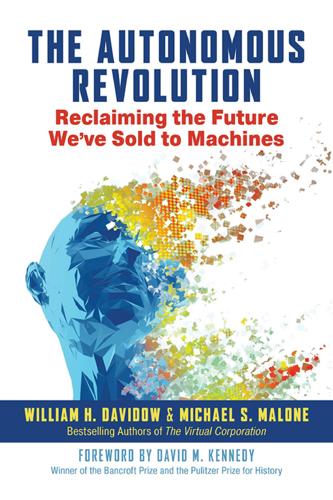
The Autonomous Revolution: Reclaiming the Future We’ve Sold to Machines
by
William Davidow
and
Michael Malone
Published 18 Feb 2020
In 1988, another warning shot was fired when Robert Tappan Morris released the first computer worm into the Internet—an act, he claimed later, that was intended to call attention to the vulnerability of the system and the inadequacy of its security measures.41 A year later, he earned the dubious distinction of being the first person to be indicted under the 1986 Computer Fraud and Abuse Act.42 He was sentenced to three years of probation, community service, and a small fine. Over the subsequent thirty years, the United States has focused a great deal of its energy on building offensive cyber weapons. In 2009, Stuxnet was launched against the Iranian uranium enrichment facility at Natanz. Twenty-seven years after the pipeline explosion in Siberia, cyber experts nevertheless described Stuxnet as the world’s first digital weapon.43 The virus took control of the Natanz centrifuges and caused a thousand of them to self-destruct.44 The NSA has developed tool kits that can be used to engineer cyberattacks.

New Dark Age: Technology and the End of the Future
by
James Bridle
Published 18 Jun 2018
Stuxnet was a military-grade cyberweapon; when dissected, it was found to be aimed specifically at Siemens centrifuges, and designed to go off when it encountered a facility that possessed a particular number of such machines. That number corresponded with one particular facility: the Natanz Nuclear Facility in Iran, the mainstay of the country’s uranium enrichment programme. When activated, the programme would quietly degrade crucial components of the centrifuges, causing them to break down and disrupt the Iranian enrichment programme.42 The attack was apparently partially successful, but the effect on other infected facilities is unknown. To this day, despite obvious suspicions, nobody knows where Stuxnet came from, or who made it.

Future Crimes: Everything Is Connected, Everyone Is Vulnerable and What We Can Do About It
by
Marc Goodman
Published 24 Feb 2015
What happened next was straight out of a Hollywood blockbuster, portrayed many times in films such as Ocean’s Eleven and National Treasure. The attackers simply prerecorded video footage of the casino vault or safe room to be targeted and played it back on the screens of the watchers and security staff. As the uranium enrichment centrifuges spun out of control at Natanz, Stuxnet masterfully intercepted the actual input values from the pressure, rotational, and vibration sensors before they reached the operational control room monitored by the plant’s engineers. Rather than presenting the correct real-time data from the Siemens PLCs, Stuxnet merely replayed the prerecorded information it had taken during phase one of the operation, showing all systems in full working order.
…
Algorithmic hacking could also cause major problems for society and its critical infrastructures because altering just a few lines of code among millions in an intelligent agent’s programming could be nearly impossible to detect but could lead to drastically different outcomes in the algos’ behavior. The attack against the uranium centrifuges at the nuclear enrichment facility in Natanz, Iran, is a perfect example of this type of threat, a subtle change that made a big difference and took years to discover. How would we know if our stock trading or navigation algos were off or maliciously subverted? We wouldn’t until it was too late, and that is a serious problem.

Smart Cities: Big Data, Civic Hackers, and the Quest for a New Utopia
by
Anthony M. Townsend
Published 29 Sep 2013
“Could this also be a threat against other installations, U.S. critical infrastructure?” he asked. “Unfortunately, the answer is yes because it can be copied easily. That’s more important than the question of who did it.” He warned of Stuxnet copycat attacks, and criticized governments and companies for their widespread complacence. “Most people think this was to attack a uranium enrichment plant and if I don’t operate that I’m not at risk,” he said. “This is completely wrong. The attack is executed on Siemens controllers and they are general-purpose products. So you will find the same products in a power plant, even in elevators.”42 Skeptics argue that the threat of Stuxnet is overblown.
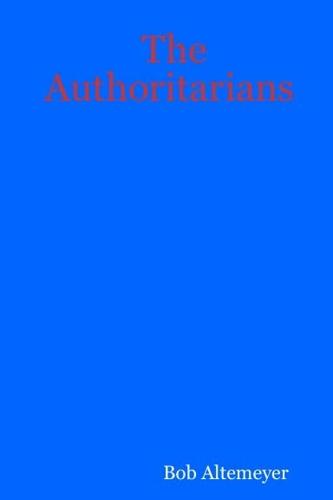
The Authoritarians
by
Robert Altemeyer
Published 2 Jan 2007
There’s no contradiction, in a highly 98 compartmentalized mind, between believing that America stands for international cooperation and the peaceful resolution of conflict on the one hand, while on the other hand insisting it has the “right” to attack whomever it wants, no matter how weak they are, whenever it wants for whatever reasons it decides are good enough. Those who protested were trouble-makers; everyone should support the government. If no connections to al-Qaida and no weapons of mass destruction turned up after the invasion, just believe they had turned up. An aluminum tube that could have been designed to help enrich uranium was used to enrich uranium, proving Saddam was making atomic bombs! Trailers that could have been used to make biological weapons were used to make them. 10 Besides, people whom the followers look to, such as the evangelist Franklin Graham (son of Billy Graham) said they still believed Saddam had such weapons, even if there was no evidence he had.
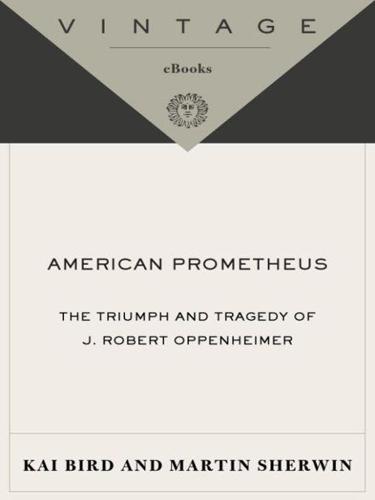
American Prometheus: The Triumph and Tragedy of J. Robert Oppenheimer
by
Kai Bird
and
Martin J. Sherwin
Published 18 Dec 2007
“The object of the project,” Serber said, “is to produce a practical military weapon in the form of a bomb in which the energy is released by a fast-neutron chain reaction in one or more of the materials known to show nuclear fission.” Summarizing what Oppenheimer’s team had learned from their Berkeley summer sessions, Serber reported that by their calculations an atomic bomb might conceivably produce an explosion equivalent to 20,000 tons of TNT. Any such “gadget,” however, would need highly enriched uranium. This core of enriched uranium, approximately the size of a cantaloupe, would weigh about thirty-three pounds. They could also construct a weapon from the even heavier element of plutonium—produced via a neutron-capture process using U-238. A plutonium bomb would need far less critical mass, and the plutonium core might therefore weigh only eleven pounds and appear no larger than an orange.
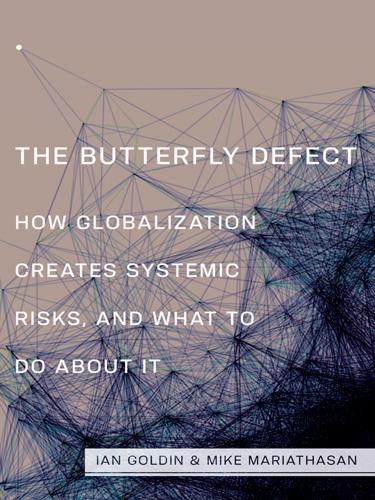
The Butterfly Defect: How Globalization Creates Systemic Risks, and What to Do About It
by
Ian Goldin
and
Mike Mariathasan
Published 15 Mar 2014
National e-government services as well as the national infrastructure, including power plants, electricity grids, and oil pipelines, use networked control systems to decrease their operational costs. The concentration of information and power in these digital systems creates points of vulnerability that are open to attack by malevolent forces. One example of such an attack is the deployment of the Stuxnet virus, discovered in 2010, which is widely thought to have caused damage to a uranium enrichment plant in Iran. The virus is believed to have been developed for this purpose by experts with detailed knowledge of Iranian systems and with the involvement of at least one government. Another threat to the virtual integrity of the Internet is cybercrime. The notion of cybercrime is used to denote security threats motivated by financial gain (although in many countries acts of cyberaggression are illegal, too).

I, Warbot: The Dawn of Artificially Intelligent Conflict
by
Kenneth Payne
Published 16 Jun 2021

Cadillac Desert
by
Marc Reisner
Published 1 Jan 1986
The whole idea behind Rampart Dam was to turn Alaska, overnight, into an industrial subcontinent. Five million kilowatts were enough to heat and light Anchorage and ten other cities its size, with power left over for a large aluminum smelter, a large munitions plant, a couple of pulp and paper mills, a refinery, perhaps even a uranium-enrichment facility tucked safely away in the wilderness—and even then, about half of the power would be left over for export. But that was the problem. Export where? The dam made sense only if all of the power could be immediately sold. Realistically speaking, the dam made no sense at all. Neither did Devil’s Canyon Dam.
…
The dams, mostly built during the Depression and the war era with low-interest money and by workers earning a few dollars a day, were the cheapest source of power around, and TVA’s rates were as low as those in the Northwest. As in the Northwest, a complement of energy-intensive industries had moved in—aluminum, uranium enrichment, steel—and now the TVA was afraid they would move right back out if it raised its rates. It was a fear whose end result, rational or not, was the Tellico Dam. In June of 1978, the Supreme Court upheld the injunction against the dam on the basis of the Endangered Species Act, as written. Legally, the Court had little choice, even though, by then, the dam was more than 90 percent built.

Whole Earth Discipline: An Ecopragmatist Manifesto
by
Stewart Brand
Published 15 Mar 2009
It began in 1994, and currently 10 percent of the electricity Americans use comes from Russian missiles and bombs. The goal is to convert twenty thousand nuclear warheads into fuel by 2013; that’s enough energy to run the whole U.S. nuclear fleet for two years. Two processes are involved. One “downblends” weapons-grade highly enriched (95 percent) uranium to low-enriched (5 percent) uranium for reactor use. The other converts plutonium into a “mixed oxide” (MOX) that also works as a fuel. In the next few years, the United States will supplement Russian efforts by commencing to forge our own nuclear swords into plowshares in Tennessee and at a new facility in South Carolina.
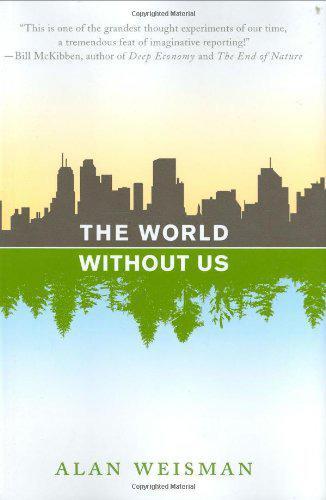
The World Without Us
by
Alan Weisman
Published 5 Aug 2008

The End of Doom: Environmental Renewal in the Twenty-First Century
by
Ronald Bailey
Published 20 Jul 2015
The traveling wave reactor also reduces nuclear weapons proliferation risks, since its fuel cycle would eliminate the need for numerous uranium processing plants. As Charles W. Forsberg, executive director of the Nuclear Fuel Cycle Project at the Massachusetts Institute of Technology, has quipped, the traveling wave fuel cycle “requires only one uranium enrichment plant per planet.” The plutonium burns itself up as it sustains a further chain reaction by transforming depleted uranium into more plutonium. In other words, a traveling wave reactor produces plutonium and uses it up at once, which means that, unlike fuel in conventional reactors, there is very little left over that could be diverted for weapons production.
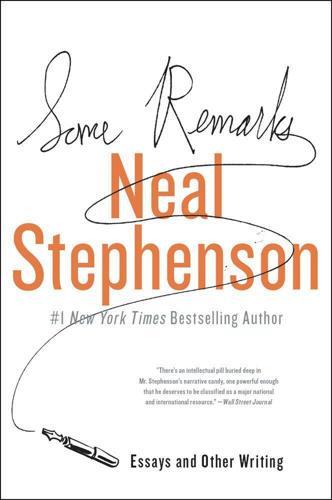
Some Remarks
by
Neal Stephenson
Published 6 Aug 2012
One of the scouts’ dads—an eminent professor of agricultural engineering—obtained, from a lab in his department, a sack of genetically identical corn kernels, carried them across campus, and handed them off to one of the other scouts’ dads: a physicist employed by the Ames Laboratory. This was an offshoot of the Manhattan Project. The uranium enriched at Oak Ridge, and used in the first atomic bombs, had been refined from its ore by a process developed at Ames. Dad #2, who had been present at the startup of the world’s first atomic pile in a racquetball court at the University of Chicago, carried the seeds into a hot room buried a couple of stories beneath one of the Ames Lab’s buildings and handed it off to a mechanical arm that carried it behind a thick wall of yellowish lead-laced glass and set it down in the vicinity of something that was radioactive.

Invention: A Life
by
James Dyson
Published 6 Sep 2021
Rotork was soon producing motorized valve actuators, engineered and patented by Jeremy, for pipelines in the oil industry. It was an ingenious idea, a form of automation that was compelling to oil companies—with Shell, BP, and Esso as customers—and to the new power industry, too. In 1962, Rotork took an order for a thousand sealed, weatherproof, and explosion-proof actuators for a new French uranium enrichment plant. I still find myself putting into practice at Dyson some of the same things Jeremy said and did when I worked for him half a century ago. As an inventor, engineer, and entrepreneur, he believed in taking on young people with no experience because this way he employed those with curious, unsullied, and open minds—as long as they didn’t sport beards or smoke pipes.
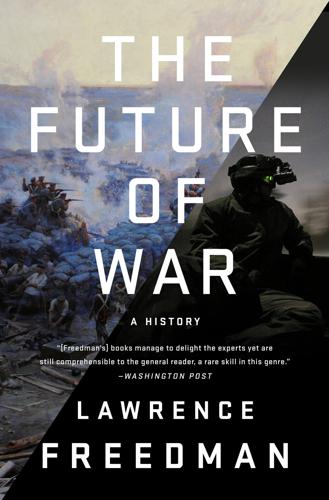
The Future of War
by
Lawrence Freedman
Published 9 Oct 2017
Small but significant acts illustrated the possibilities. First Iraqi and then Serb air defences were degraded by messing with their software. The Israelis did something similar with Syrian air defences when they took out a nuclear reactor under construction in 2007. The Stuxnet virus, probably a joint US-Israeli project, was designed to set back uranium enrichment in Iran by disabling centrifuges.21 This had some effect but also showed how hard it was to stop these attacks spreading away from the original target. The virus was noticed when non-Iranian systems were hit. Every time national systems were tested to see how well they could defend against interference from others, they were found to be wanting, and for all types of networks, malevolent hacking became regular.
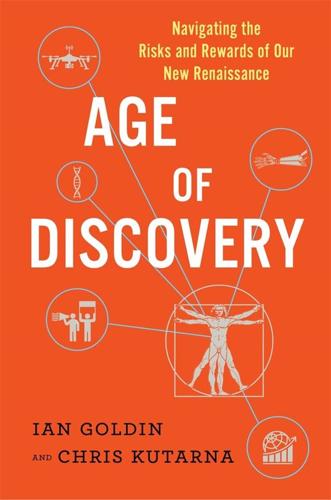
Age of Discovery: Navigating the Risks and Rewards of Our New Renaissance
by
Ian Goldin
and
Chris Kutarna
Published 23 May 2016
More recently, in mid-2015, personnel records of 21.5 million current and former employees of the US government, including 5.6 million fingerprint images, were stolen when the Office of Personnel Management was hacked—possibly by a foreign government aiming to recruit informants or identify spies.87 Other highly sophisticated malware initiatives, likely state-sponsored, have likewise penetrated embassies, research institutes and other sensitive targets of governments around the world.88 The rising scale of critical infrastructure connected to the Internet—including defense, chemical, food, transportation, nuclear, water, financial, energy and other systems—means that not just cybercrime, but cyber warfare is now possible. As of 2016, two major cyber attacks causing physical infrastructure damage have been publicly confirmed. In 2010, the Stuxnet worm sabotaged Iran’s uranium enrichment infrastructure by infecting control systems and causing the uranium centrifuges to tear themselves apart.89 (A similar worm had been aimed at North Korea’s facilities, but failed to reach its target because of the country’s extreme isolation.)90 And in 2014, a German steel mill suffered “massive damage” after cyber attackers gained access to the plant’s control systems and caused critical components to fail.91 Many more such strikes are being attempted.
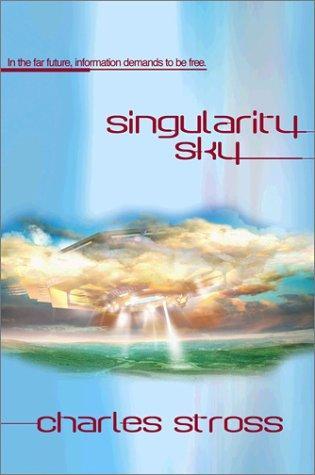
Singularity Sky
by
Stross, Charles
Published 28 Oct 2003
She glanced around at the vacant chairs, the powered-down work-station on the table. "Oh, and one other thing. The Eschaton always wipes out CVDs just before they go live. We figure it knows where to find them because it runs its own CVD. Sort of like preserving a regional nuclear hegemony by attacking anyone who builds a uranium enrichment plant or a nuclear reactor, yes? Anyway. You haven't quite begun to break the law yet. The fleet is assembling, you've located the time capsule, but you haven't actually closed the loop or made use of the oracle in a forbidden context. You might even get away with it if you hop backward but don't try to go any earlier than your own departure point.
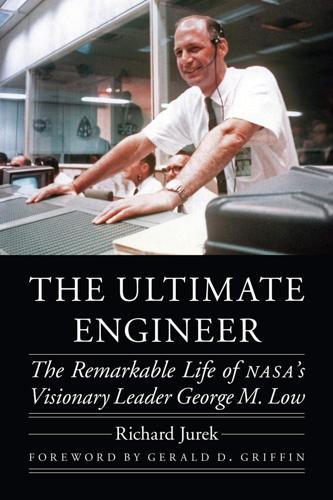
The Ultimate Engineer: The Remarkable Life of NASA's Visionary Leader George M. Low
by
Richard Jurek
Published 2 Dec 2019
Low had been serving as a trustee to the institute since 1971, and he was intimately familiar with its challenges and opportunities. It was in desperate need of renewal. The institute was at a crossroads, and without radical changes, it would face the real possibility of extinction. He was also approached to be the president of a start-up uranium-enrichment company as part of the Garrett Corporation, an industrial conglomerate based in Los Angeles, California. The high-tech start-up, called TRENCOR, would build and operate a centrifuge enrichment plant in Texas on behalf of the U.S. Energy Research and Development Administration. While the Garrett opportunity offered him enticing financial rewards, including rich bonus targets and generous stock grants, the unique opportunity at RPI represented something even more valuable to him—a challenge with a purpose.
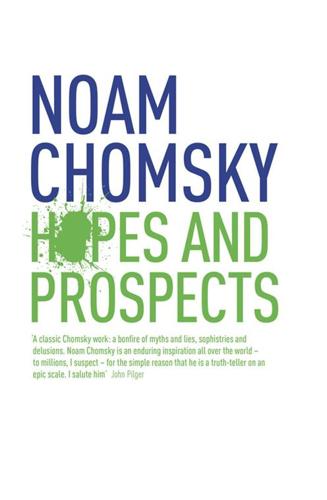
Hopes and Prospects
by
Noam Chomsky
Published 1 Jan 2009
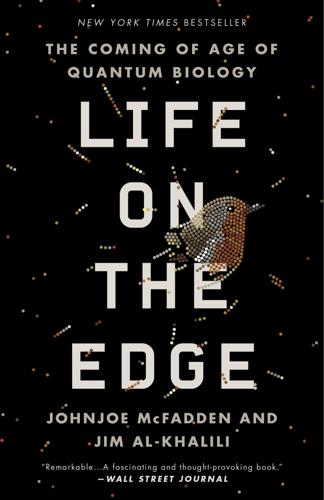
Life on the Edge: The Coming of Age of Quantum Biology
by
Johnjoe McFadden
and
Jim Al-Khalili
Published 14 Oct 2014
He had been awarded the Nobel Prize in chemistry in 1934 for discovering deuterium, the isotope of hydrogen that, as you may remember from chapter 3, was used to study the kinetic isotope effect in enzymes and thereby demonstrate that their activity involves quantum tunneling. Urey’s expertise in the purification of isotopes led to his appointment in 1941 as head of the uranium enrichment part of the Manhattan Project, which was attempting to develop the atomic bomb. However, Urey became disillusioned with the Manhattan Project’s aims and the secrecy in which it operated, and later attempted to dissuade the US president, Harry S. Truman, from dropping the bomb on Japan. After Hiroshima and Nagasaki, Urey wrote an article for the popular Collier’s magazine entitled “I’m a Frightened Man,” warning of the dangers posed by atomic weapons.
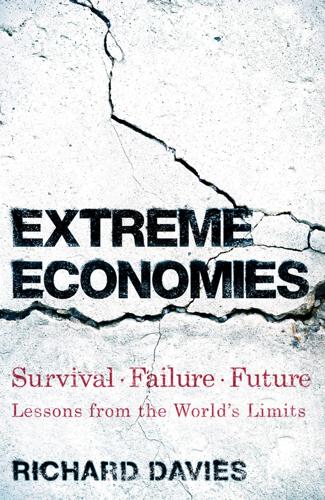
Extreme Economies: Survival, Failure, Future – Lessons From the World’s Limits
by
Richard Davies
Published 4 Sep 2019
The Estonian industrial base changed too, with factories set up all along the north-east coast: Kunda was the site of a huge cement factory and pulp mill; Kohtla-Järve had plentiful oil-shale deposits and became an important source of energy; Sillamäe, once a peaceful resort where Russia’s cultural elite, including Tchaikovsky, had vacationed, was repurposed as a centre for uranium enrichment, the nature of the work so secretive that the town was removed from maps. The economic model, planned from Moscow, was catastrophic for Estonia. Agricultural collectivization was supposed to reduce the number of farms by amalgamating small homesteads into large estates and thus deliver efficiency gains; instead it resulted in agricultural output falling by half.

These Strange New Minds: How AI Learned to Talk and What It Means
by
Christopher Summerfield
Published 11 Mar 2025
Most real attacks are relatively amateur, involving mass phishing for passwords or brute force search for out-of-date patches or other vulnerabilities that the victims have foolishly overlooked. But sophisticated cybercampaigns, typically by state-sponsored teams of hackers, can be highly impactful. Over the past ten years, high-profile cyberattacks have been used to cripple a Ukrainian power station, program Iranian uranium-enriching centrifuges to shake themselves to bits, extort millions from the UK National Health Service in a ransomware attack, and steal a billion dollars from the Bangladesh Bank. These incidents involved months or even years of careful planning, patient surveillance of the network, and stealthy penetration via highly sophisticated exploits – a category known as advanced persistent threats (APTs).

This Is How They Tell Me the World Ends: The Cyberweapons Arms Race
by
Nicole Perlroth
Published 9 Feb 2021
For thirteen days, it did nothing but measure the speed of the centrifuge rotors. It was checking to make sure the rotors ran at speeds between 800 and 1100 hertz, the exact frequency range used by Natanz’s centrifuges. (Frequency converters that operate past 1000 hertz are actually bound by U.S. export controls because they are primarily used for uranium enrichment.) Once that thirteen-day waiting period was over, the payload got to work. The code was designed to speed up the rate at which the rotors spun to 1400 hertz for exactly fifteen minutes, before returning to normal for twenty-seven days. After those twenty-seven days were over, it would slow the speed of the rotors to just 2 hertz for fifty minutes, before returning to normal for another twenty-seven days, and repeating the whole process all over again.
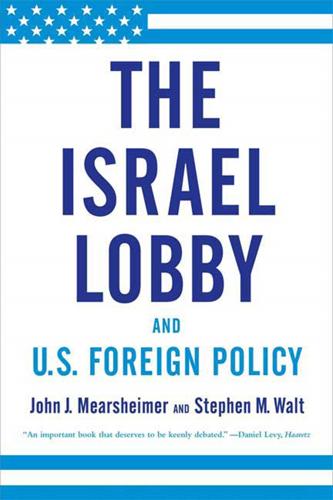
The Israel Lobby and U.S. Foreign Policy
by
John J. Mearsheimer
and
Stephen M. Walt
Published 3 Sep 2007
Also see Nazila Fathi, “Iran Is Defiant, Vowing to U.N. It Will Continue Nuclear Efforts,” New York Times, December 25, 2006; Ron Kampeas, “The Iran Sanctions Package: Some Assembly Required, Teeth Not Included,” JTA.org, December 25, 2006; Nasser Karimi, “Iran Rebuffs U.N., Vows to Speed Up Uranium Enrichment,” Washington Post, December 25, 2006; and Neil King, “U.S. Bid to Limit Iran Gets Wary Response,” Wall Street Journal, December 29, 2006. 77. Daniel Bilefsky, “Europe Approves More Sanctions Against Iran,” New York Times, April 24, 2007; Daniel Dombey and Gareth Smyth, “New EU Sanctions Raise Pressure on Iran,” Financial Times, April 23, 2007; Warren Hoge, “U.N.
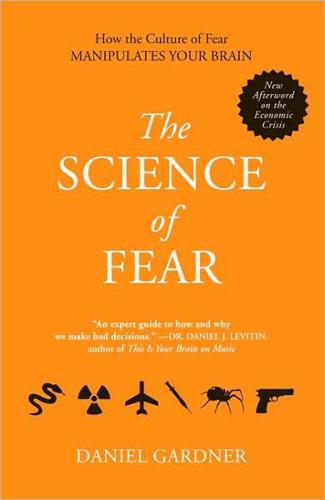
The Science of Fear: How the Culture of Fear Manipulates Your Brain
by
Daniel Gardner
Published 23 Jun 2009

Vultures' Picnic: In Pursuit of Petroleum Pigs, Power Pirates, and High-Finance Carnivores
by
Greg Palast
Published 14 Nov 2011
Juanita told me, “If it was so good, why’d they come all the way from Europe to this little Black town in Claiborne Parish? Why wouldn’t they keep it for themselves?” Local folk were worried about Claiborne Pond. Since a third of the houses didn’t have any plumbing, this was all they had for drinking and cooking. Juanita told me, “Not many folk around here know a lot about uranium enrichment.” BNFL counted on that. At a community meeting, the shill for the nuclear operation held up a chunk of what the company called “uranium hexafluoride,” and there was nothing to fear from this handful of dirt. It was an impressive display. However, Forest Grove residents may be Black and poor, but they know when a magic show is jive.

Fulfillment: Winning and Losing in One-Click America
by
Alec MacGillis
Published 16 Mar 2021
Two years later, deciding the company needed more capital, Mike Brooks took it public, in a stock offering that raised almost $14 million. John Hutchison arrived in the factory in the mid-1990s. He had grown up in the hills outside Nelsonville, with a single mom. His dad, who worked at the uranium enrichment plant in Piketon, seventy-five miles to the southwest, had moved out when he was a toddler; his mother was left in such a bind that she gave their third child, a newborn girl, up for adoption. She eventually remarried a trade-school teacher. Their home was across the line in Hocking County, so John had to go all the way to Logan for high school, an hour-long ride on the bus.
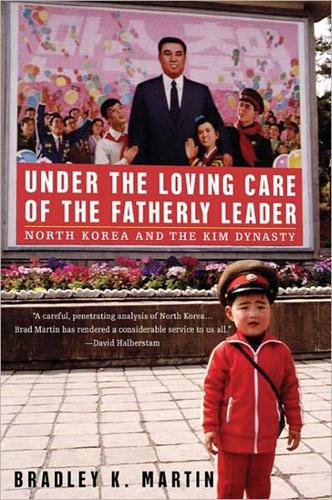
Under the Loving Care of the Fatherly Leader: North Korea and the Kim Dynasty
by
Bradley K. Martin
Published 14 Oct 2004
Republican officials in charge of foreign policy, suspicious of the Clinton administration’s efforts to find accommodation with Pyongyang, set out to review U.S. policy. After President Bush’s Axis of Evil speech, there was more to come. In October 2002 U.S. Assistant Secretary of State James Kelly and other officials visiting Pyongyang surprised their hosts with evidence that North Korea was continuing nuclear weapons development using uranium enrichment, a different and separate process from the plutonium process the country had frozen earlier. The delegation returned to Washington to report that its counterparts had come clean on the uranium project, defiantly insisting there was no reason why the country should not have its own nukes. Washington sought to keep the issue on the back burner while it took on Iraq first.
…
“If that is indeed the case, it could have produced enough fissile material for an additional five or six nuclear weapons,” Kelly said.3 When Pyongyang hinted broadly that it might simply declare itself a nuclear power, China, for one, did not like that idea and cut off North Korea’s oil supplies for several days to enforce a demand for negotiations. By early 2004 Pyongyang had offered to re-freeze its plutonium-based program (evidently realizing its admission had been a tactical error, it now denied it had acknowledged having a uranium enrichment program) while negotiating with the United States, South Korea, China, Japan and Russia to see what sort of deal it could get. What it wanted from Washington included a non-aggression pact and diplomatic relations. While the first nuclear crisis had appeared pretty much to halt movement toward economic change, Pyongyang the second time around kept moving on a parallel track—to the extent that quite a few foreign skeptics started to become believers that something major could be happening this time.

Living in a Material World: The Commodity Connection
by
Kevin Morrison
Published 15 Jul 2008
Boone 163, 164 Pigou, Arthur Cecil 138 Pillsbury 233 Pioneer Hi-Bred 102, 106, 107, 108 Pizza Hut 89 Plant Patent Act 1930 (US) 104 platinum 192–3 Plato: Republic 179 plutonium 42 popcorn 70 population, world 15, 16 n. 11, 23–4, 61 n. 10, 94 portfolios 242–4 Potanin, Vladimir 199 poultry 85–7 Poupard, Cardinal Paul 145 Prebon 260 Precious Woods 149 Project Independence 30 Puranam Ravikkumar 249 Putin, President Vladimir 9, 45 Railpol 182 rapeseed 93–4 Rappaport, Daniel 253, 262 Raymond, Lee 50 Reagan, President Ronald 116, 252 Redford, Robert 265 reduced emissions from deforestation and degradation (REDD) 150 Refco 231 298 | INDEX Regional Greenhouse Gas Initiative (RGGI) 143 Reilly, William 158 renewable energies 34–9 Renewable Fuels Association 80 Reserve Bank of Australia 14 Reuters–CRB Index 240 Rhodes, Cecil 210 Rio Tinto 13, 200, 201, 211, 223 n. 24 Robertson, Julian 236 Robinson, John 105, 106 Rockefeller, John D. 197, 200, 254 Rockefeller, William Goodsell 200 Rogers, Henry 200 Roll, The 241 Romney, Mitt 80 Roogers, Henry H. 197 Roosevelt, President Franklin D. 76, 89, 103 Royal Dutch Shell 260, 261 Rudd, Kevin 171 n. 16 Ryan, John 155, 156, 160 Sahn, Bobby 269 Salad Oil Scandal 245 Samuelson, Paul 238, 239 Sandor, Richard 145–6, 147 Sasol 33 Saudi Aramco 47 Schaeffer, Richard 253, 266, 267, 268, 269 Schwarzenegger, Arnold 37, 38, 130, 144 Secretan, Pierre 200 Secretan Syndicate, The 200 Seed Resource Guide 106 seeds diversity 106–10 GM 104–6, 107 Seven Sisters 251 Seykota, Ed 239 shale oil 50–1, 64 n. 33 Shanghai Futures Exchange 213 Shaw, Robert 265 Shear, Neal 259 Shell 79, 261 Shuff, Thomas 230–1, 233, 238, 270 Silicon Valley 37 Simmons, Matthew 47 Simon, Julian 13, 14, 15 Ultimate Resource 2, The 14 Skilling, Jeffrey 257 Smith, Adam 71 Smith, Captain John 100 Snyder, Pamela 162–3 Societé des Metaux, Le 200 Société Générale 261 Solano Partners 157 solar power 33, 34, 36 Solar Power programme 39 soya bean 68–9, 82, 95, 109, 120 n. 14 Soylent Green 15 n. 4 Spacek, Sissy 114 Spencer, Jonathan 243 sport utility vehicles (SUVs) 64 n. 30 Sprecher, Jeffrey 257, 258, 259, 261, 262, 263 Squanto 100 Standard and Poor’s 240 Standard Chartered 242 Standard Oil 197, 200, 253, 273 n. 14 Star Wars Programme 55 Starbucks 89 Statoil 153 Steinbeck, John: East of Eden 161–2 Steinhause, Mitchell 266 Stern 134 Stern Review 147 Sting, The 265 Subramanian, Shri 35 sugar 89–94 sulphur dioxide 139, 140 sulphur hexafluoride 131 Sumitomo 215 Sumitomo copper scandal 204, 246 Sundblad, Philip 36, 76, 77, 78, 84, 114, 154, 155 Sun-Microsystems 37 Sustainable Forestry Management 147, 148 Sustainable Land Fund, The 157 Suzlon Energy 35 Swingland, Professor Ian 137, 146, 148 Sygenta 106 Tamminen, Terry 38, 53, 54, 55, 60, 144 tantalum 219 Tanti, Tulsi 35 Tara, Kimberly 149, 159, 184 Tata Motors 49 Telsa Motors 191 temperature, global 61 n. 11 teosinte 97 Tertiary Minerals 219 Tesla 38 Thatcher, Margaret 22 thorium 43–4 INDEX Three Mile Island accident 21 Tiger Fund 236 TimeWarner 13 Total 261 Touradji, Paul 218, 236, 237, 239 Touradji Capital Management 218, 237 Toyota 53, 54, 191, 193 tradable polluting permits 137, 138–9 Trading Places 255 Trafigura 199 Trapp, Goran 259 tree hugging 148–9 Truman, President Harry 8 Tudor Capital 237 Turner, Frederick Jackson 209 Tyson 86 UBS 246 United Nations Climate Change Conference (2007) 29 United Nations Environment Programme (UNEP) 173 n. 28 UNESCO 166 Union Miniere 202 United Fruit Company 239 United Nations Framework Convention on Climate Change (UNFCCC) 125–6, 140, 150, 169 n. 2 United States Bureau of Reclamation 163 United States Department of Agriculture (USDA) 73, 74, 90, 95, 109–10 Conservation Reserve Program (CRP) 111 United States Department of Energy 30, 32, 33, 193 United States emissions market 142–4 United States Geological Survey 214 uranium 64 n. 27, 219 highly enriched (HEU) 64 n. 28 uranium-101 41–4 uranium-235 42 uranium hexafluoride (UF6) 42 uranium oxide (U3O8) 42 Vaidhyanathan, Raghuraman 35 Valentine, Billy Ray 256 Vantage Partners 55 Varzi, Mehdi 26, 47 Vatican Climate Forest 145 Vekselberg, Viktor 199 Venter, Craig 38 Verasun 77 | 299 Vice, Charles 258 Viola, Vinnie 253 virtual water 166 Vitol 199 Volcker, Paul 114 voluntary carbon offset schemes 144–5 Vromans, Dr Jaap 58, 59 Walker, Keith 167–8 Wallace, Henry A. 89, 102, 103, 120 n. 14, 122 n. 32 Wallace, Henry C. 103 Wal-Mart 25 Wamsley, John 157 War of the Pacific (1879–83) 198, 207 Wara, Michael 152 Warburg, Paul M. 229 Ward, Dr Richard 262, 263 water 157–68 consumption 158–9 desalination 168 droughts 167 entitlements 167 n. 63 irrigation 159 pollution 110–3 pricing 159–61, 164, 169 rights 162–3, 167, 177 n. 55, 177 n. 58 trading 160, 164–6 virtual 166 Water2water.com 164–5 Waterexchange 165 Webb–Pomerene Act (US) 201 West Texas Intermediate (WTI) 138, 250, 252, 253, 254 Western regional Climate Initiative (WCI) 143 Weston, Guy 147 wetland banking 155–6 Weymar, Helmut 238–9, 247 WFS Water Fund 166 White House Effect 27 Wildlands Inc. 156 wind power 33, 34–5, 36 World Bank 141, 147, 158, 159, 173 n. 28, 217 Global Environment Facility (GEF) 141 World Nuclear Association 41 World Trade Center 255 World Trade Organization (WTO) 94 Doha Round 11, 94 World Water Council 158 WorldCom 257 300 | INDEX Xstrata 211 yellowcake 42 Yeltsin, President Boris 46 Index compiled by Annette Musker Yergin, Daniel 33–4 yield return 242 Zinni, General Anthony (‘Tony’) 168–9

Enemies and Neighbours: Arabs and Jews in Palestine and Israel, 1917-2017
by
Ian Black
Published 2 Nov 2017
Iran admitted to the existence of its nuclear programme in 2003 and agreed to stricter international inspections of its nuclear sites and to suspend production of enriched uranium. However, alarm deepened in 2005 with the election of the hard-line populist President Mahmoud Ahmadinejad and Iran’s resumption of uranium enrichment. In the wake of the US-led invasion of Iraq, European efforts began to negotiate a peaceful roll-back of the Iranian nuclear programme in the name of nuclear non-proliferation and regional stability. UN, US and EU sanctions were imposed to pressure Tehran while Israeli leaders repeatedly warned that they would not tolerate a nuclear Iran.
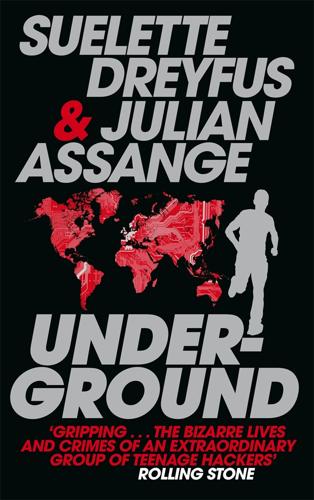
Underground
by
Suelette Dreyfus
Published 1 Jan 2011
Programmed to monitor, control and reprogram very specific industrial processes, the worm then cleverly hid its footprints as it gallivanted through an estimated 100 000 systems worldwide. In particular it appears to have attacked Siemens’ systems in the nuclear power program in Iran where it messed with the centrifuges in that country’s uranium enrichment plants.9 This it apparently did very successfully, when hundreds of centrifuges suddenly stopped producing the materials needed to meet Iran’s nuclear agenda. There is evidence that the Stuxnet worm came from some sort of joint Israeli and American intelligence operation.10,11 Undoubtedly some of the millennium generation of hackers has ended up in jobs like these: on intelligence agency tiger teams working for the American and other governments designing a new sort of weapon.
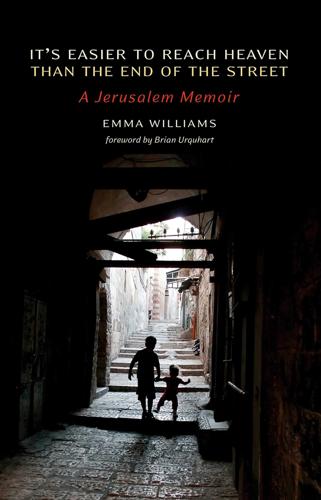
It's Easier to Reach Heaven Than the End of the Street: A Jerusalem Memoir
by
Emma Williams
Published 7 Nov 2012
The world paid little attention to the suffering in Gaza, even less when Hezbollah provoked Israel by an attack from across the Lebanese border in July 2006. Israel responded on a massive scale, bringing down rocket attacks on northern Israel. And this at a time when Iran was cranking up its anti-Israel language, its Holocaust denial, and, most ominously, its uranium enrichment program. Ordinary Israelis grew increasingly concerned. Benjamin Netanyahu, speaking Israelis’ deepest fears, warned: “It is 1938, Iran is Germany, and it is about to arm itself with nuclear weapons.” Late in President George Bush’s second term, the US administration, mired in Iraq, looked about for a policy success in the Middle East as well as for support from its Arab allies, and the Israel–Palestine issue became for a time a focus of attention.
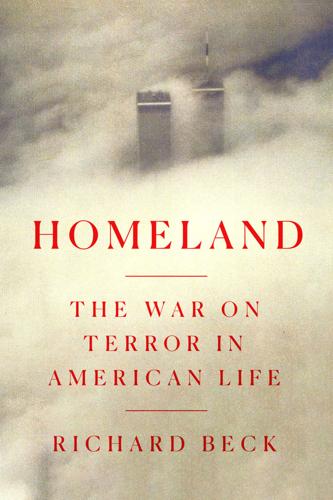
Homeland: The War on Terror in American Life
by
Richard Beck
Published 2 Sep 2024
Relying on the allegations of Iraqi defectors looking to advance their own political interests at Hussein’s expense, the Times reporters Judith Miller and Michael Gordon wrote a notorious front-page story in September 2002 alleging that Iraq had purchased aluminum tubes specifically designed for use in uranium enrichment. Miller talked to White House officials she described as administration “hard-liners,” writing that “the first sign of a ‘smoking gun,’ they argue, may be a mushroom cloud.”[24] Vice President Dick Cheney cited the story on Meet the Press, and Secretary of Defense Donald Rumsfeld and National Security Adviser Condoleezza Rice did the same on other television programs.

The Empathic Civilization: The Race to Global Consciousness in a World in Crisis
by
Jeremy Rifkin
Published 31 Dec 2009
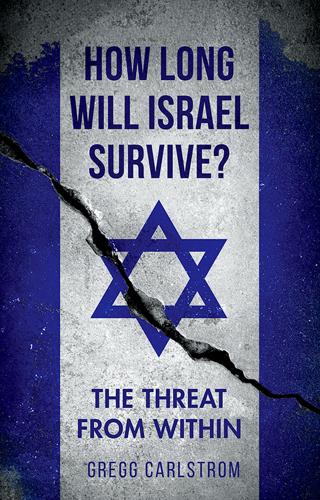
How Long Will Israel Survive Threat Wthn
by
Gregg Carlstrom
Published 14 Oct 2017

The Weather Makers: How Man Is Changing the Climate and What It Means for Life on Earth
by
Tim Flannery
Published 10 Jan 2001
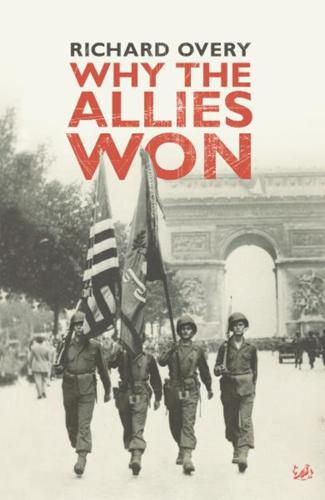
Why the Allies Won
by
Richard Overy
Published 29 Feb 2012

Empire of Illusion: The End of Literacy and the Triumph of Spectacle
by
Chris Hedges
Published 12 Jul 2009
Moyers went back to the clip of the Cheney performance:CHENEY: It’s now public that, in fact, he has been seeking to acquire, and we have been able to intercept to prevent him from acquiring through this particular channel, the kinds of tubes that are necessary to build a centrifuge, and the centrifuge is required to take low-grade uranium and enhance it into highly enriched uranium, which is what you have to have in order to build a bomb. Moyers, in the studio, asked Bob Simon of CBS what he thought of Cheney’s actions:MOYERS: Did you see that performance? BOB SIMON: I did. MOYERS: What did you think? SIMON: I thought it was remarkable.

The System: Who Owns the Internet, and How It Owns Us
by
James Ball
Published 19 Aug 2020
So too are power plants, dams, train signalling systems and other key bits of our infrastructure. Hacking doesn’t just let an attacker see how these are being used: it can let the attacker take control of those systems themselves – and break them. This was most dramatically unleashed in 2010, in an attack against Iran. Inside their nuclear-enrichment sites – where uranium was being enriched to weapons-grade quality – cylinders on the site began behaving erratically, spinning back and forth rapidly in a particular and deeply destructive pattern. After a short time behaving in this inexplicable way, the cylinders would explode, damaging the site and disrupting the country’s nuclear programme.

The Perfect Weapon: War, Sabotage, and Fear in the Cyber Age
by
David E. Sanger
Published 18 Jun 2018

Conscience of a Conservative: A Rejection of Destructive Politics and a Return to Principle
by
Jeff Flake
Published 31 Jul 2017
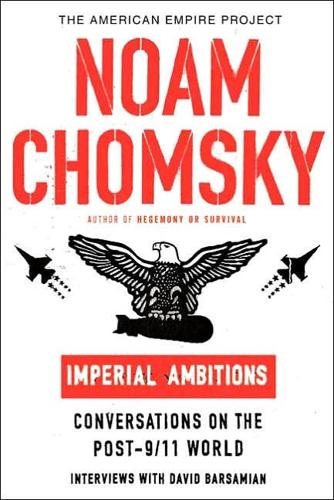
Imperial Ambitions: Conversations on the Post-9/11 World
by
Noam Chomsky
and
David Barsamian
Published 4 Oct 2005
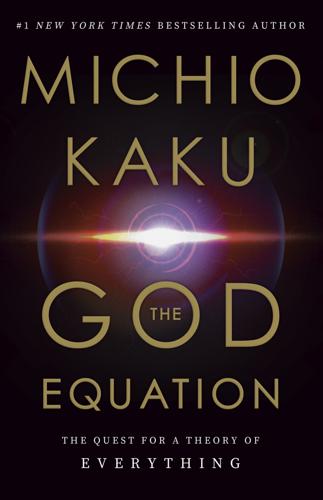
The God Equation: The Quest for a Theory of Everything
by
Michio Kaku
Published 5 Apr 2021

Power Hungry: The Myths of "Green" Energy and the Real Fuels of the Future
by
Robert Bryce
Published 26 Apr 2011
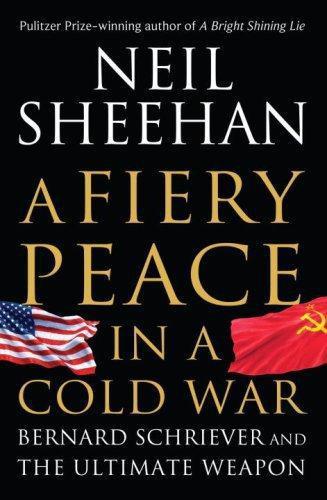
A Fiery Peace in a Cold War: Bernard Schriever and the Ultimate Weapon
by
Neil Sheehan
Published 21 Sep 2009
The design was simple and Robert Oppenheimer and the other scientists at Los Alamos were so certain it would work that they didn’t feel it was necessary to test it. The rub was that there was a shortage of uranium. Although there were plentiful underground deposits of the naturally occurring substance in the American West and in Canada, exploration for uranium deposits and mining them had hardly begun. The manufacturing process to turn natural uranium into the highly enriched isotope was also so slow that if the scientists relied on U-235 and the gun-type design, the United States would be able to produce only one atomic bomb by 1945. To create more atomic bombs, Los Alamos had to use plutonium as the nuclear core. Plutonium, however, was much more difficult to bring to supercriticality than U-235 because of a phenomenon called spontaneous fission, which resulted from an impurity inherent in the manufacturing process.
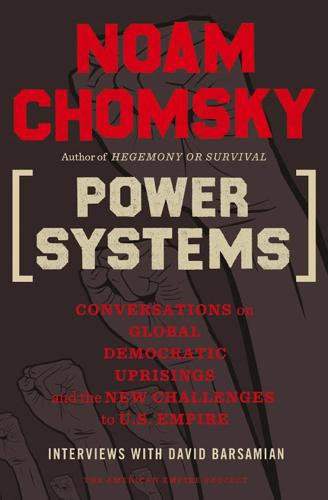
Power Systems: Conversations on Global Democratic Uprisings and the New Challenges to U.S. Empire
by
Noam Chomsky
and
David Barsamian
Published 1 Nov 2012
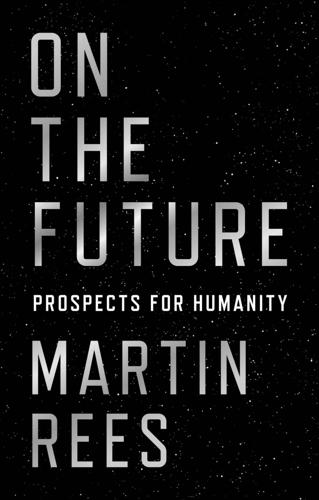
On the Future: Prospects for Humanity
by
Martin J. Rees
Published 14 Oct 2018
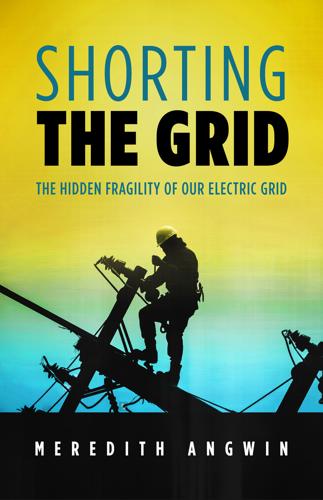
Shorting the Grid: The Hidden Fragility of Our Electric Grid
by
Meredith. Angwin
Published 18 Oct 2020
Therefore, the cost of the next unit of production can provide a considerable portion of that plant’s financial requirements. Only 6% of Ontario’s electricity comes from natural gas. A nuclear plant’s major expense is its capital cost and employees. Ontario has CANDU nuclear plants: their fuel is natural uranium, which is far cheaper than enriched uranium. For wind turbines and solar PV, the major expense is capital cost. The marginal energy cost (land rent and maintenance) is low. Ontario has regulations that prohibit the use of coal for electricity production. This is a prerogative of state-level decision-making. Within a state, there is usually no requirement to be “fuel-neutral” about generating sources.
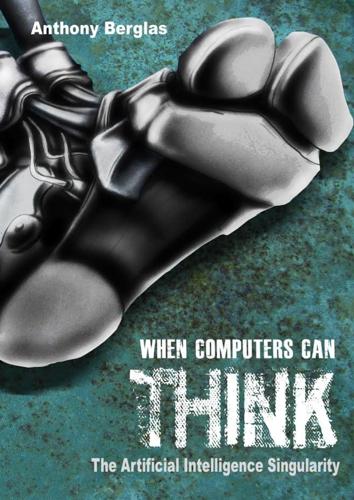
When Computers Can Think: The Artificial Intelligence Singularity
by
Anthony Berglas
,
William Black
,
Samantha Thalind
,
Max Scratchmann
and
Michelle Estes
Published 28 Feb 2015
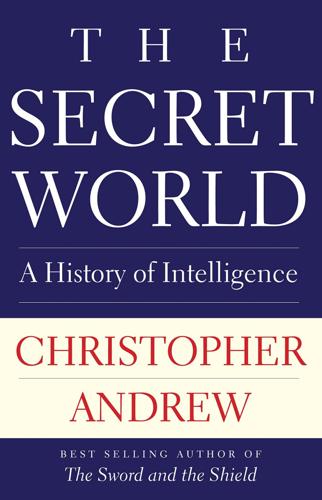
The Secret World: A History of Intelligence
by
Christopher Andrew
Published 27 Jun 2018
Bush became President, DCI George Tenet told Congress: ‘Our most serious concern with Saddam Hussein must be the likelihood that he will seek a renewed WMD cap-ability both for credibility and because every other strong power in the region either has it or is pursuing it.’27 The British Joint Intelligence Committee (JIC) reported a year later: ‘Although there is very little intelligence we continue to judge that Iraq is pursuing a nuclear weapons programme. We assess the programme to be based on gas centrifuge uranium enrichment . . . ’28 The fact that there was indeed ‘very little intelligence’ on Saddam’s supposed nuclear-weapons programme should have rung alarm bells. But the high quality of SIS intelligence both on Gaddafi’s WMD programmes and on the network run by the former head of the Pakistani nuclear project, Dr A.
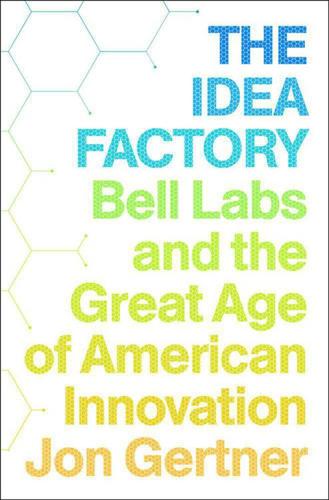
The Idea Factory: Bell Labs and the Great Age of American Innovation
by
Jon Gertner
Published 15 Mar 2012
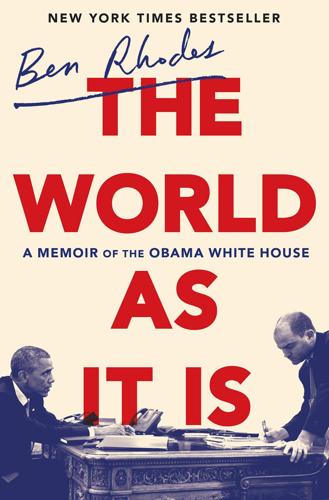
The World as It Is: A Memoir of the Obama White House
by
Ben Rhodes
Published 4 Jun 2018
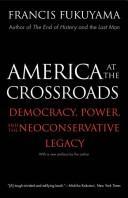
America at the Crossroads: Democracy, Power, and the Neoconservative Legacy
by
Francis Fukuyama
Published 20 Mar 2007

Player One
by
Douglas Coupland
Published 30 Jun 2011
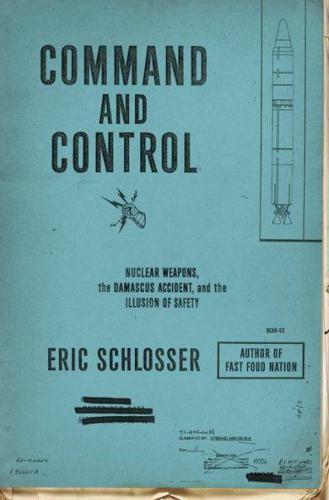
Command and Control: Nuclear Weapons, the Damascus Accident, and the Illusion ofSafety
by
Eric Schlosser
Published 16 Sep 2013

Neutrino Hunters: The Thrilling Chase for a Ghostly Particle to Unlock the Secrets of the Universe
by
Ray Jayawardhana
Published 10 Dec 2013

Eleanor Rigby: A Novel
by
Douglas Coupland
Published 29 May 2006
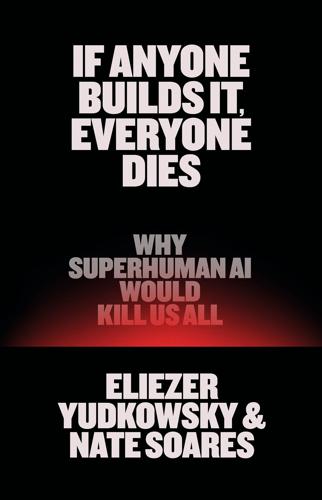
If Anyone Builds It, Everyone Dies: Why Superhuman AI Would Kill Us All
by
Eliezer Yudkowsky
and
Nate Soares
Published 15 Sep 2025
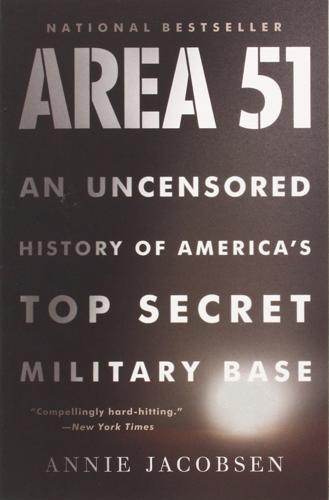
Area 51: An Uncensored History of America's Top Secret Military Base
by
Annie Jacobsen
Published 16 May 2011
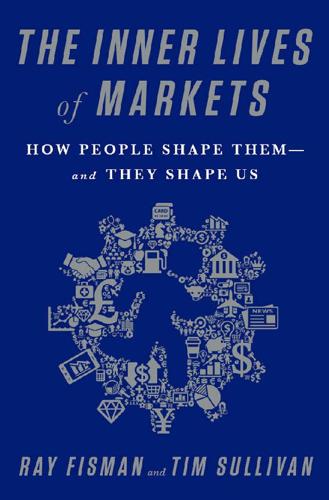
The Inner Lives of Markets: How People Shape Them—And They Shape Us
by
Tim Sullivan
Published 6 Jun 2016

First Light: Switching on Stars at the Dawn of Time
by
Emma Chapman
Published 23 Feb 2021

Age of the City: Why Our Future Will Be Won or Lost Together
by
Ian Goldin
and
Tom Lee-Devlin
Published 21 Jun 2023

Moral Ambition: Stop Wasting Your Talent and Start Making a Difference
by
Bregman, Rutger
Published 9 Mar 2025

In Spite of the Gods: The Rise of Modern India
by
Edward Luce
Published 23 Aug 2006
But all Islamabad needed to do was to request help from China, which supplied Pakistan with much of the technology to develop both nuclear warheads and the missile delivery systems. In addition, Pakistan’s notorious A. Q. Khan, who later became known as the father of the country’s nuclear program, had in the 1970s stolen the blueprints from his Dutch employer that revealed the process by which uranium is enriched into weapons-grade material. By 1987, when India and Pakistan almost came to blows following India’s “Brass Tacks” operation—a large-scale military exercise near the Pakistan border, which India says Pakistan misinterpreted as a prelude to war (Islamabad said its interpretation was reasonable)—both were thought to possess rudimentary nuclear devices.
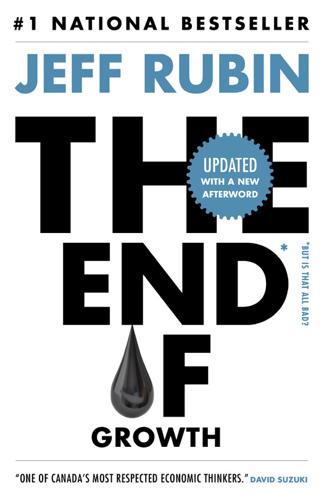
The End of Growth
by
Jeff Rubin
Published 2 Sep 2013

Post Wall: Rebuilding the World After 1989
by
Kristina Spohr
Published 23 Sep 2019
Indeed, their accord on the removal and destruction of hundreds of their battlefield nuclear weapons also created a basis for the START II treaty that Yeltsin and Bush would come to sign in January 1993.[19] Taking his cue from Bush, on 8 November 1991 Roh formally proposed the denuclearisation of the whole peninsula. If implemented, South Korea would no longer possess or store nuclear weapons on its soil, although, he stressed, Seoul would remain ultimately protected by the US nuclear umbrella. The denuclearisation declaration would also prohibit Seoul from having nuclear reprocessing or uranium enrichment facilities. In this light Roh called on North Korea to abandon any plans it might harbour to develop and build its own nuclear bomb.[20] The North Korean nuclear programme was, and remains, a tangled story.[21] Since the 1950s Kim had legitimately acquired from the Soviet Union at least two small nuclear reactors for purely research purposes, of which the most recent known example had come on stream in 1987 at the Yongbyon site about ninety kilometres north of Pyongyang.
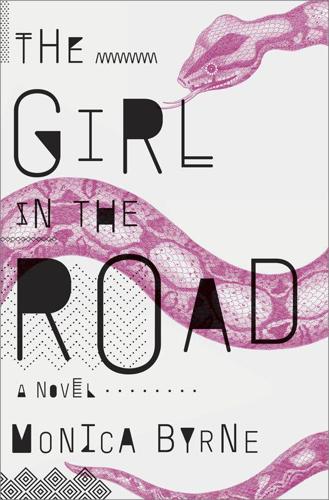
The Girl in the Road
by
Monica Byrne
Published 19 May 2014
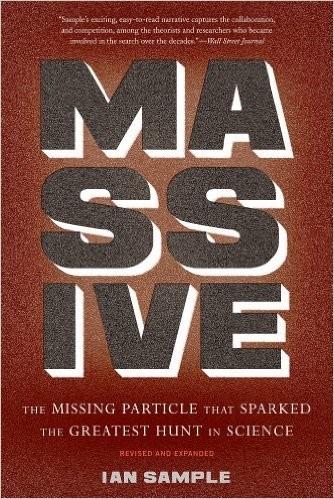
Massive: The Missing Particle That Sparked the Greatest Hunt in Science
by
Ian Sample
Published 1 Jan 2010
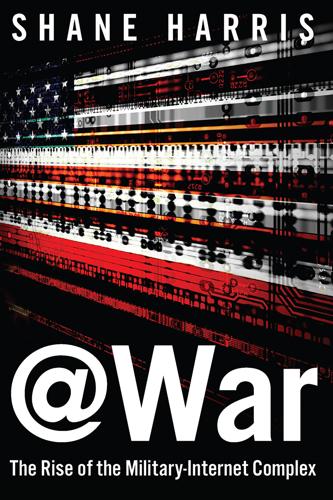
@War: The Rise of the Military-Internet Complex
by
Shane Harris
Published 14 Sep 2014
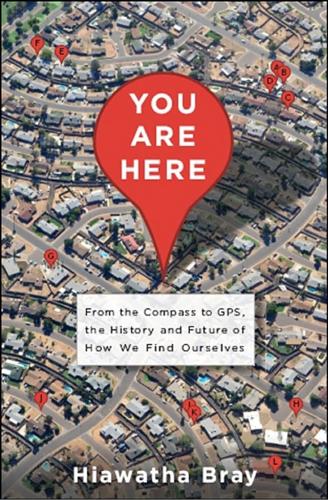
You Are Here: From the Compass to GPS, the History and Future of How We Find Ourselves
by
Hiawatha Bray
Published 31 Mar 2014
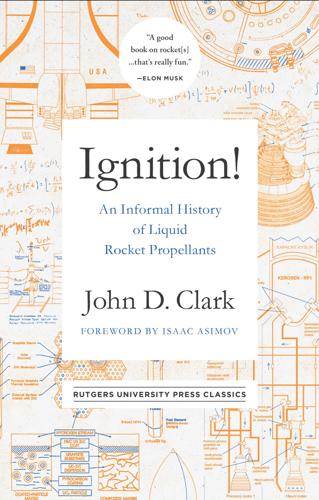
Ignition!: An Informal History of Liquid Rocket Propellants
by
John Drury Clark
Published 14 Jun 1972
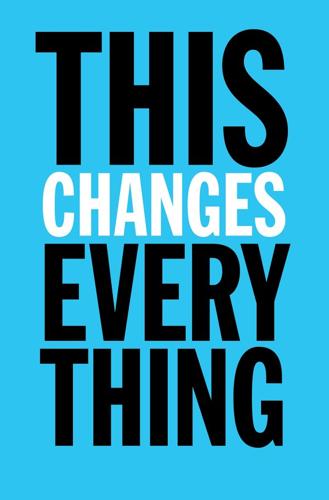
This Changes Everything: Capitalism vs. The Climate
by
Naomi Klein
Published 15 Sep 2014

Hegemony or Survival: America's Quest for Global Dominance
by
Noam Chomsky
Published 1 Jan 2003

The End of Secrecy: The Rise and Fall of WikiLeaks
by
The "Guardian"
,
David Leigh
and
Luke Harding
Published 1 Feb 2011
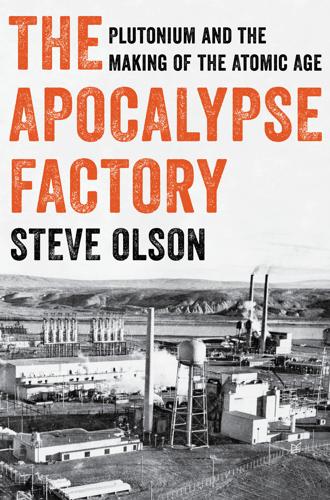
The Apocalypse Factory: Plutonium and the Making of the Atomic Age
by
Steve Olson
Published 28 Jul 2020
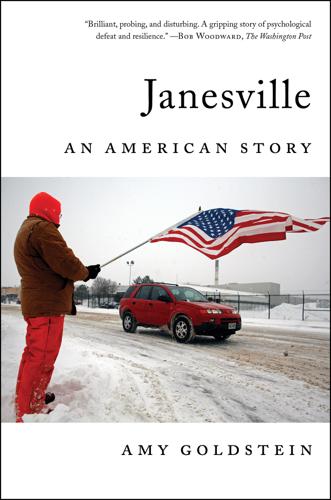
Janesville: An American Story
by
Amy Goldstein
Published 17 Apr 2017

Human Compatible: Artificial Intelligence and the Problem of Control
by
Stuart Russell
Published 7 Oct 2019
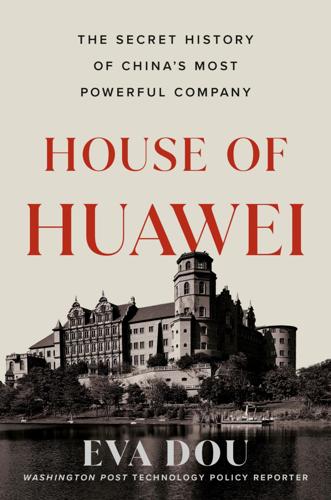
House of Huawei: The Secret History of China's Most Powerful Company
by
Eva Dou
Published 14 Jan 2025
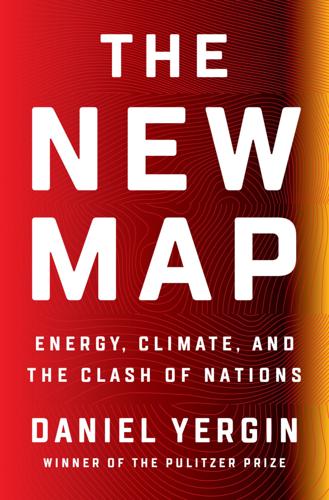
The New Map: Energy, Climate, and the Clash of Nations
by
Daniel Yergin
Published 14 Sep 2020
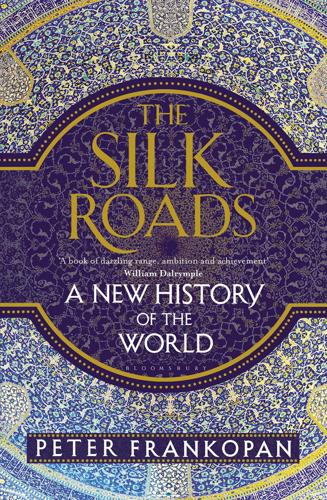
The Silk Roads: A New History of the World
by
Peter Frankopan
Published 26 Aug 2015
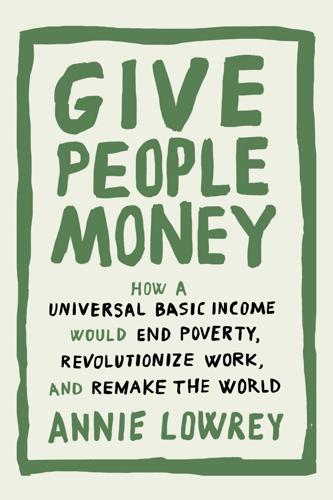
Give People Money
by
Annie Lowrey
Published 10 Jul 2018

A Demon of Our Own Design: Markets, Hedge Funds, and the Perils of Financial Innovation
by
Richard Bookstaber
Published 5 Apr 2007

Exponential: How Accelerating Technology Is Leaving Us Behind and What to Do About It
by
Azeem Azhar
Published 6 Sep 2021
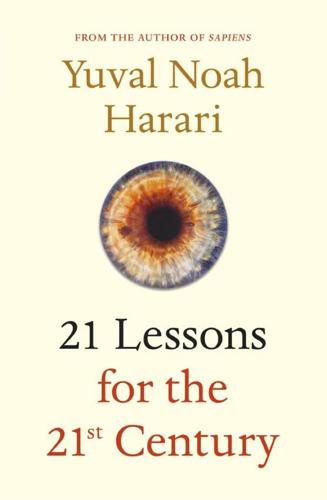
21 Lessons for the 21st Century
by
Yuval Noah Harari
Published 29 Aug 2018
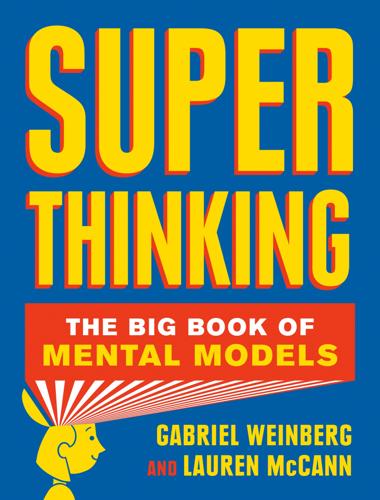
Super Thinking: The Big Book of Mental Models
by
Gabriel Weinberg
and
Lauren McCann
Published 17 Jun 2019

Warnings
by
Richard A. Clarke
Published 10 Apr 2017
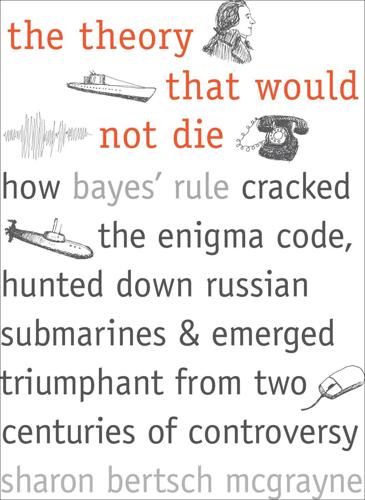
The Theory That Would Not Die: How Bayes' Rule Cracked the Enigma Code, Hunted Down Russian Submarines, and Emerged Triumphant From Two Centuries of Controversy
by
Sharon Bertsch McGrayne
Published 16 May 2011

Case for Mars
by
Robert Zubrin
Published 27 Jun 2011
Deuterium is the key fuel not only for both first- and second-generation fusion reactors, but it is also an essential material for the nuclear power industry today. If you have enough deuterium, you can moderate a nuclear fission reactor with “heavy water” instead of ordinary “light water,” and such a heavy-water moderated reactor can run on natural uranium, with no enrichment required. Canadian-made nuclear power reactors known as “CANDUs” work on this principle today. The problem however, is that you have to electrolyze 30 tonnes of ordinary “light” water to produce enough hydrogen to make one kilogram of deuterium, and unless you have a lot of very cheap hydroelectric power to burn, the process is prohibitively expensive.

The Case for Space: How the Revolution in Spaceflight Opens Up a Future of Limitless Possibility
by
Robert Zubrin
Published 30 Apr 2019

The Wars of Afghanistan
by
Peter Tomsen
Published 30 May 2011

Microtrends: The Small Forces Behind Tomorrow's Big Changes
by
Mark Penn
and
E. Kinney Zalesne
Published 5 Sep 2007

ZeroZeroZero
by
Roberto Saviano
Published 4 Apr 2013

The Making of an Atlantic Ruling Class
by
Kees Van der Pijl
Published 2 Jun 2014

Underland: A Deep Time Journey
by
Robert Macfarlane
Published 1 May 2019

People, Power, and Profits: Progressive Capitalism for an Age of Discontent
by
Joseph E. Stiglitz
Published 22 Apr 2019

The Sum of All Fears
by
Tom Clancy
Published 2 Jan 1989
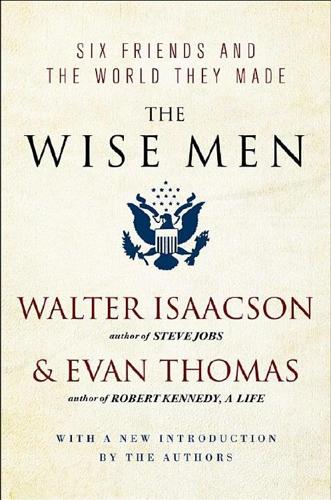
The Wise Men: Six Friends and the World They Made
by
Walter Isaacson
and
Evan Thomas
Published 28 Feb 2012

The Cobweb
by
Neal Stephenson
and
J. Frederick George
Published 31 May 2005

Civilization: The West and the Rest
by
Niall Ferguson
Published 28 Feb 2011
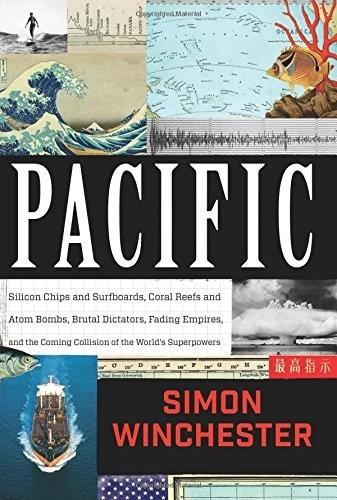
Pacific: Silicon Chips and Surfboards, Coral Reefs and Atom Bombs, Brutal Dictators, Fading Empires, and the Coming Collision of the World's Superpowers
by
Simon Winchester
Published 27 Oct 2015

The Default Line: The Inside Story of People, Banks and Entire Nations on the Edge
by
Faisal Islam
Published 28 Aug 2013
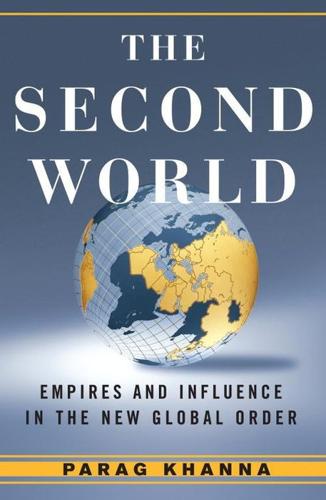
Second World: Empires and Influence in the New Global Order
by
Parag Khanna
Published 4 Mar 2008

The Problem of Political Authority: An Examination of the Right to Coerce and the Duty to Obey
by
Michael Huemer
Published 29 Oct 2012

Connectography: Mapping the Future of Global Civilization
by
Parag Khanna
Published 18 Apr 2016

Making It in America: The Almost Impossible Quest to Manufacture in the U.S.A. (And How It Got That Way)
by
Rachel Slade
Published 9 Jan 2024
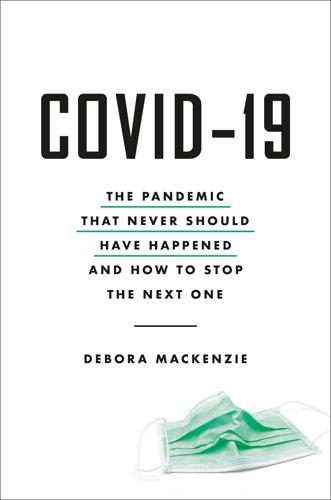
Covid-19: The Pandemic That Never Should Have Happened and How to Stop the Next One
by
Debora MacKenzie
Published 13 Jul 2020
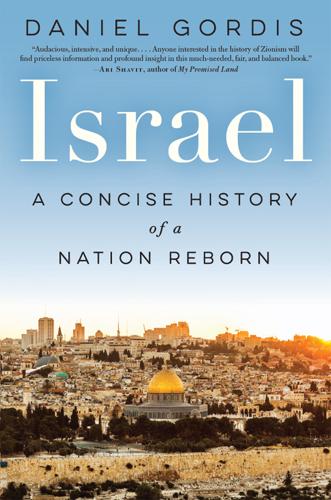
Israel: A Concise History of a Nation Reborn
by
Daniel Gordis
Published 17 Oct 2016
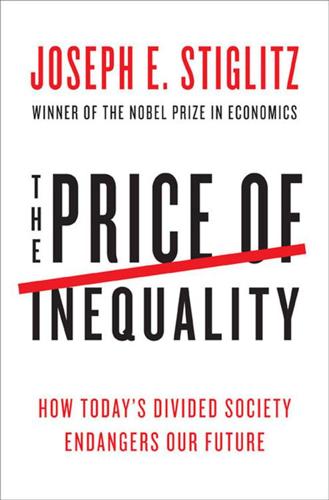
The Price of Inequality: How Today's Divided Society Endangers Our Future
by
Joseph E. Stiglitz
Published 10 Jun 2012

Uncontrolled Spread: Why COVID-19 Crushed Us and How We Can Defeat the Next Pandemic
by
Scott Gottlieb
Published 20 Sep 2021
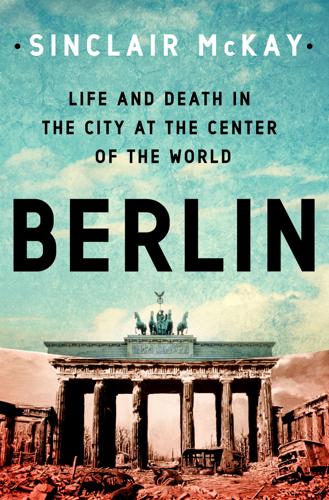
Berlin: Life and Death in the City at the Center of the World
by
Sinclair McKay
Published 22 Aug 2022
The quartet would have had a shrewd idea that, just as the Americans were advanced in their development of atomic weaponry, the Soviets would have been working hard on these problems too. The wider assumption among physicists for the last few years was that vast industrial facilities would be required to process the necessary uranium, but it was von Ardenne who believed that the uranium might be enriched with much smaller centrifuges. To von Ardenne, his work was all-consuming, irrespective of governmental politics, be they Nazi or communist or indeed liberal and democratic. And as much as he seemed resigned to the idea of being spirited away to Russia, along with his most valuable technical equipment, to continue his work, he did not anticipate doing so under duress.

Human Frontiers: The Future of Big Ideas in an Age of Small Thinking
by
Michael Bhaskar
Published 2 Nov 2021
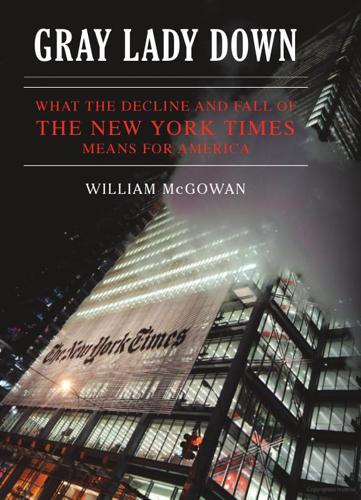
Gray Lady Down: What the Decline and Fall of the New York Times Means for America
by
William McGowan
Published 16 Nov 2010
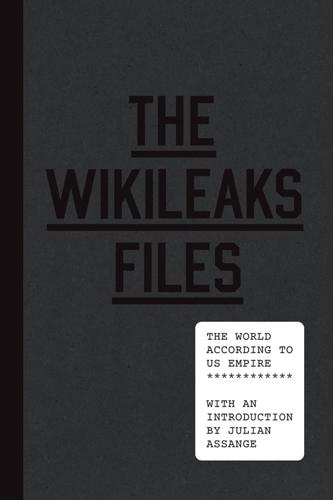
The WikiLeaks Files: The World According to US Empire
by
Wikileaks
Published 24 Aug 2015
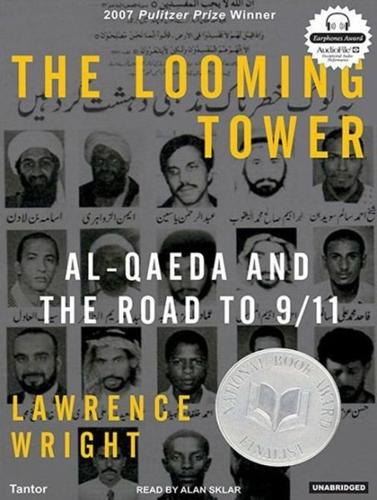
The Looming Tower: Al-Qaeda and the Road to 9/11
by
Lawrence Wright
Published 26 Sep 2006
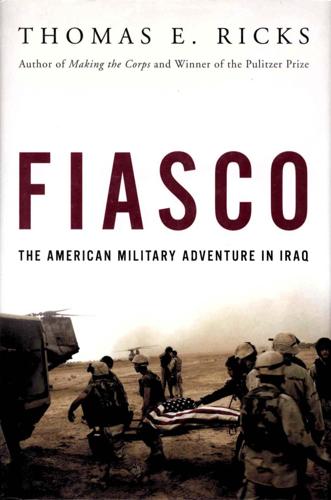
Fiasco: The American Military Adventure in Iraq
by
Thomas E. Ricks
Published 30 Jul 2007
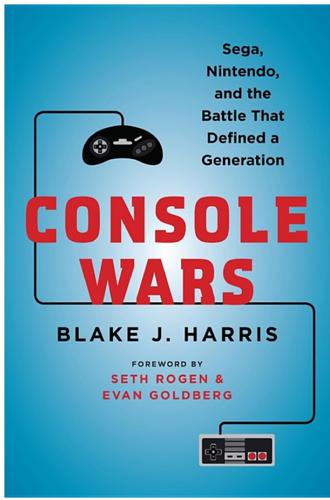
Console Wars: Sega, Nintendo, and the Battle That Defined a Generation
by
Blake J. Harris
Published 12 May 2014
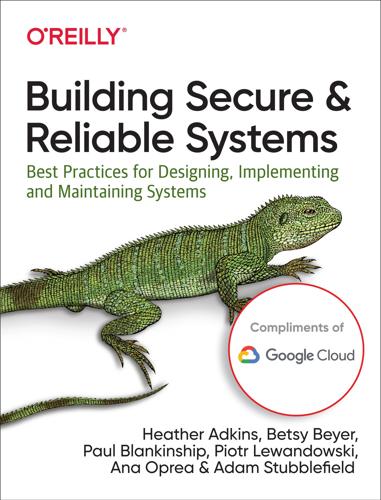
Building Secure and Reliable Systems: Best Practices for Designing, Implementing, and Maintaining Systems
by
Heather Adkins
,
Betsy Beyer
,
Paul Blankinship
,
Ana Oprea
,
Piotr Lewandowski
and
Adam Stubblefield
Published 29 Mar 2020
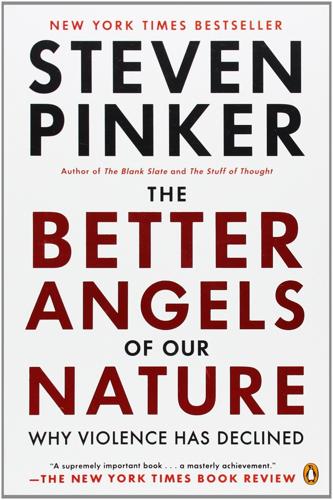
The Better Angels of Our Nature: Why Violence Has Declined
by
Steven Pinker
Published 24 Sep 2012
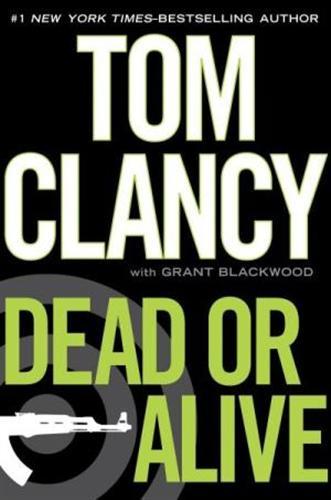
Dead or Alive
by
Tom Clancy
and
Grant (CON) Blackwood
Published 7 Dec 2010
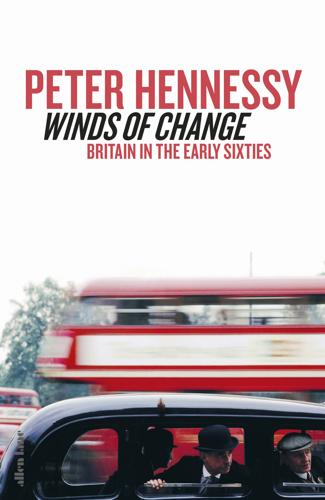
Winds of Change
by
Peter Hennessy
Published 27 Aug 2019

What’s Your Type?
by
Merve Emre
Published 16 Aug 2018
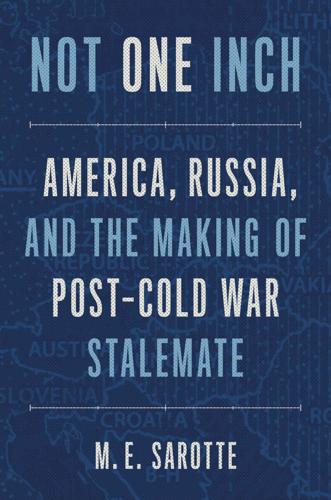
Not One Inch: America, Russia, and the Making of Post-Cold War Stalemate
by
M. E. Sarotte
Published 29 Nov 2021
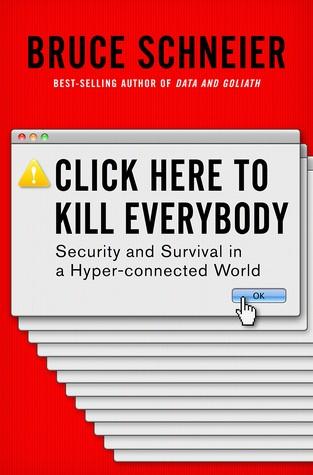
Click Here to Kill Everybody: Security and Survival in a Hyper-Connected World
by
Bruce Schneier
Published 3 Sep 2018

Enlightenment Now: The Case for Reason, Science, Humanism, and Progress
by
Steven Pinker
Published 13 Feb 2018
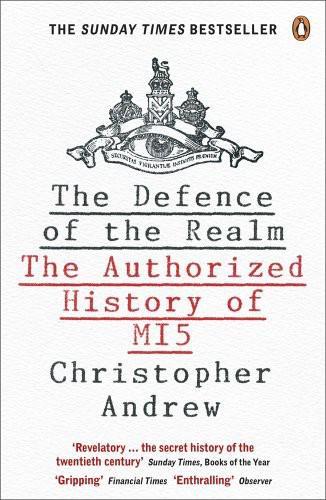
The Defence of the Realm
by
Christopher Andrew
Published 2 Aug 2010
At some point during the first half of 1945, Angelov asked May to obtain samples of the uranium used in the construction of atomic weapons – an assignment which a Canadian agent of the GRU, Israel Halperin, had described as ‘absolutely impossible’. May, however, succeeded. On 9 August 1945, three days after Hiroshima, he gave Angelov a report on atomic research, details of the bomb dropped on Hiroshima and two samples of uranium: an enriched specimen of U-235 in a glass tube and a thin deposit of U-233 on a strip of platinum foil. The GRU resident in Ottawa, Nikolai Zabotin, sent his deputy to take them immediately to Moscow. Soon afterwards Zabotin was awarded both the Order of the Red Banner and the Order of the Red Star. Angelov gave May about 200 Canadian dollars in a whisky bottle.10 The intelligence officer best equipped to interrogate Gouzenko after his defection was Jane Archer, née Sissmore.
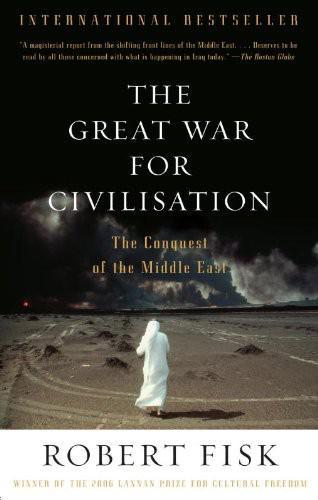
The Great War for Civilisation: The Conquest of the Middle East
by
Robert Fisk
Published 2 Jan 2005
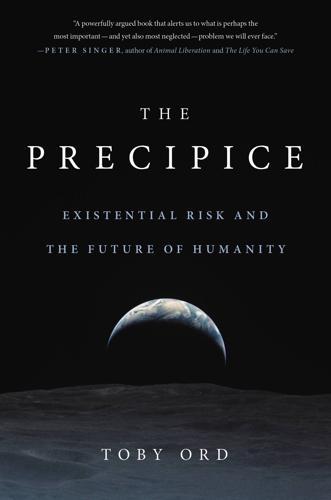
The Precipice: Existential Risk and the Future of Humanity
by
Toby Ord
Published 24 Mar 2020